For me and three of my very close friends, it has become a tradition, every year, in summer, to do a short three-day trip to some nice beachside destination and just have a good time. For several years, we used to depart Verona-Boscomantico (LIPN) in one of the club’s aircraft and fly either to Elba (twice) Losinj (thrice) or Calvi (once).
Since I’m now back in Germany and my friends are spread all over Germany, this time we decided to meet up in Lübeck and go from there. Very early this year, a weekend in late July was fixed and the idea was born to head for Palanga in Lithuania. For who doesn’t know, Palanga is a nice holiday village on the Baltic coast of Lithuania. It does have a big airport, EYPA.
By the way, that place has a very special place in my heart. It is where my first “trip” as a pilot led me to in 1997. I went back in 2001 and 2005, but hadn’t been back since. Also, we used to have very good flying friends there who belonged to a nearby gliding club (Kartena – see map above). Very fond memories…
Anyway, a fixed-schedule trip in the Baltic Sea region is always a weather risk, even in high summer, and even with the option to fly IFR. After all, nobody wants to stay in such a place when the weather is bad. For that reason, we had a couple of alternate plans in mind. Anyway, not needed in this July 2014. A huge high pressure area was present over the Baltic for very much two thirds of the month. It’s actually still there as of today. I have to say we were very lucky this time.
From Lübeck, it’s a flight pretty much all across the Baltic Sea. In theory, one could go via the coasts of Poland and Kaliningrad (Russia), but that would make things very complicated, since it would require a permit. Also, it would be longer. So, since we had a lot of factors going for us (1. the Cirrus, with the chute, 2. relatively warm waters and 3. lots of ships in that area, it could be done very safely.
Here’s the filed airway routing with the FIR boundaries displayed:
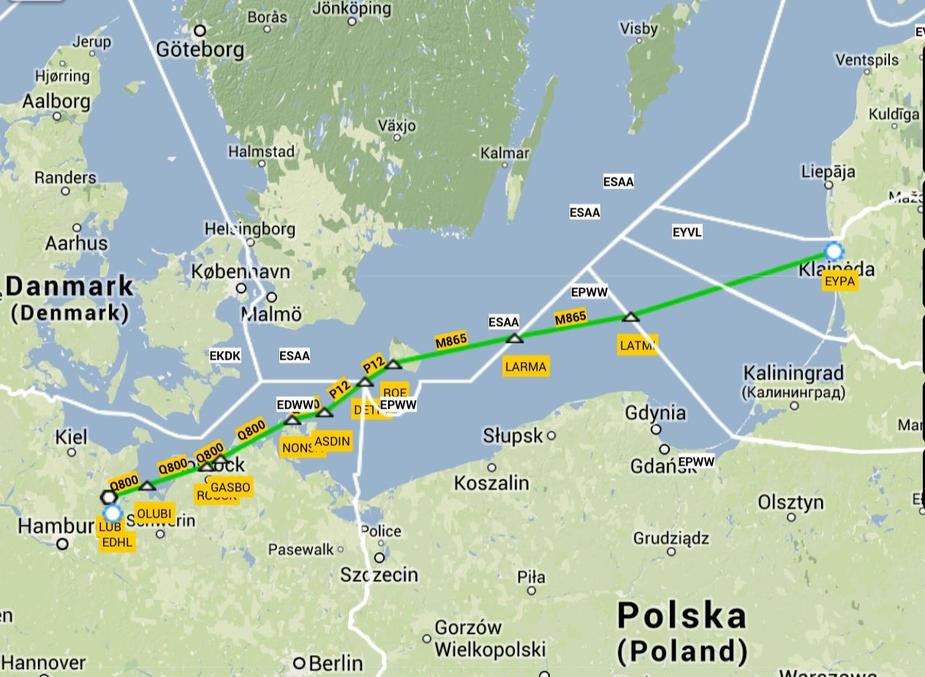
As you can see, at first it’s all along the German Baltic coast, then out to the Danish island of Bornholm and then direct to Palanga. What’s interesting is that after leaving Bremen FIR, one flies through Swedish airspace. Danish airspace isn’t touched at all. After that, between LARMA and LATMI, its Polish airspace which however is delegated to Sweden Control. Then, one invariably has to fly through Kaliningrad FIR and then into Vilnius FIR. Fortunately, merely flying over the high seas of Russian airspace does not require any permits.
Without any wind, this is usually a flight of just over two hours in the SR22.
Here’s the weather image, on the morning of our departure:
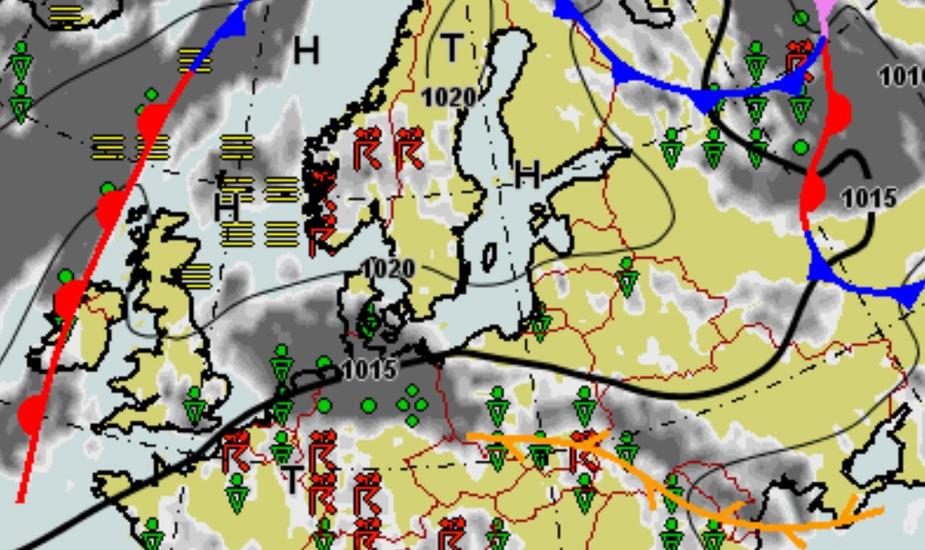
As you can see, high pressure over most of the Baltic. Just a bit of cloud on the first bit of the flight. The only bad news was that we had to expect a noticable headwind. Good weather in the Baltic sea area can normally be equated to easterly winds.
As expected, the GRAMET was totally fine.
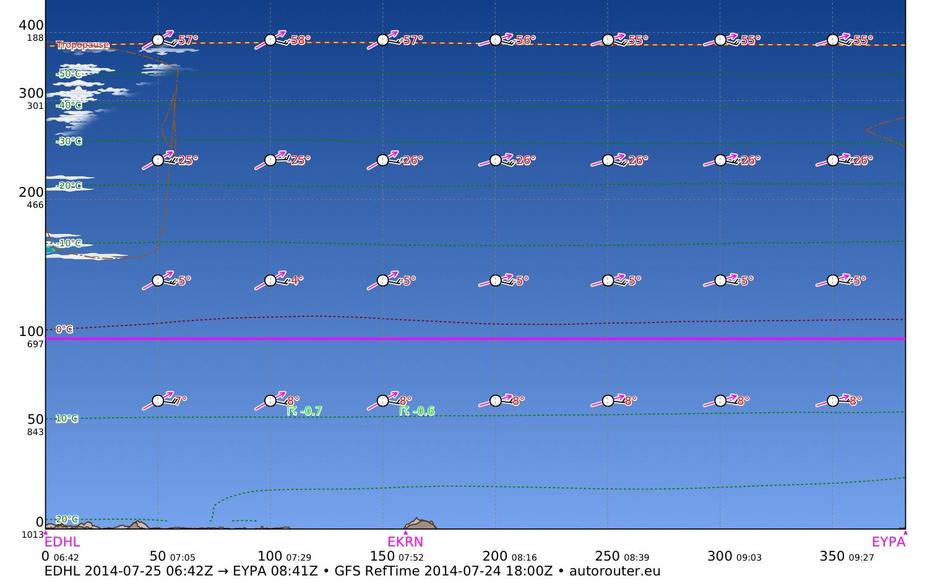
Friday morning, 08:15 local time at EDHL, my mates happily expecting to see Palanga and Lithuania.
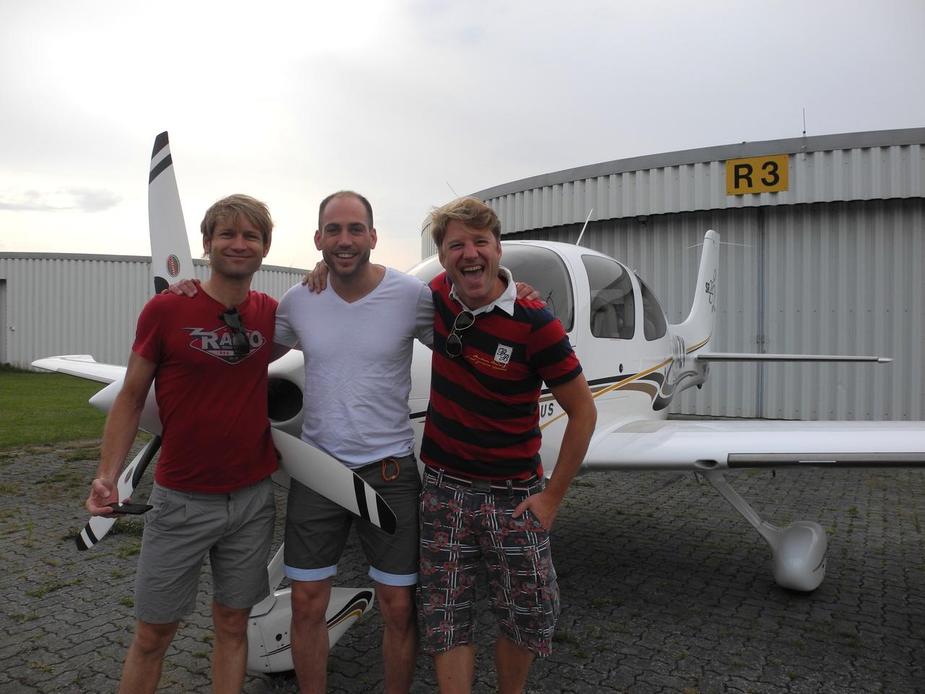
Just after departure from runway 07, a look over the Lübecker Bucht. Exactly as briefed, a bit of high cloud but nothing else.
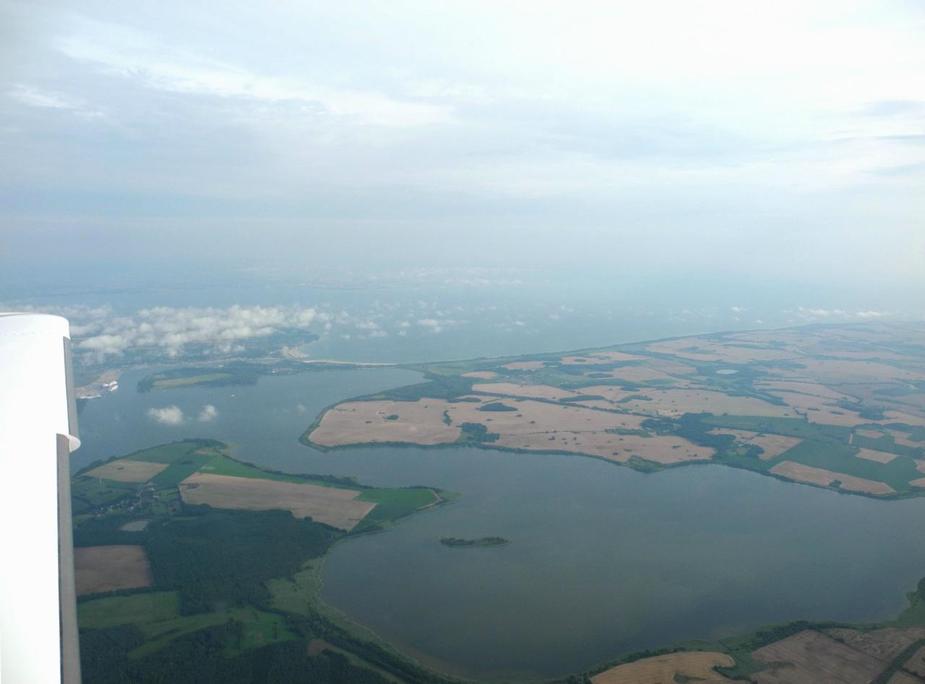
Two minutes after calling Bremen Radar, they cleared us to FL100 and all to the way direct to the FIR boundary (DETNI). This continued throughout the flight: every controller cleared us all the way to the exit point with the next adjacent FIR.
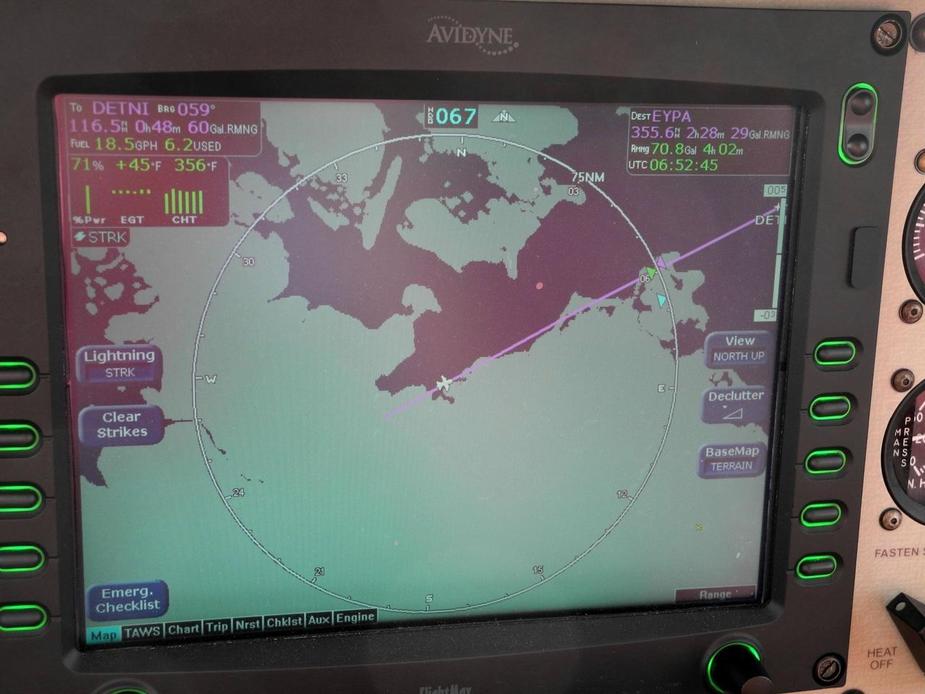
Warnemünde.
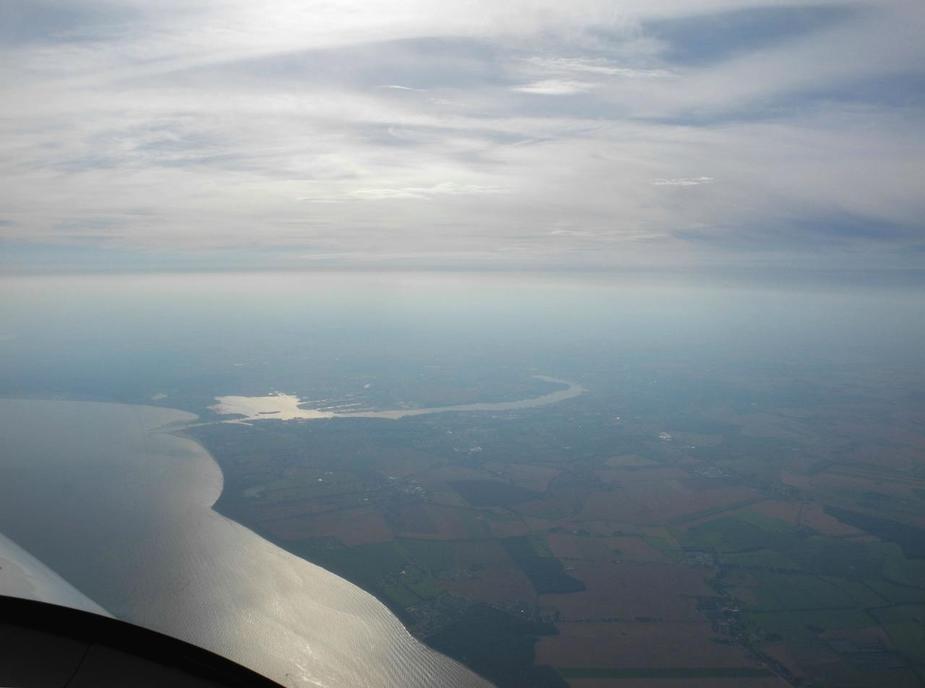
The Darß.
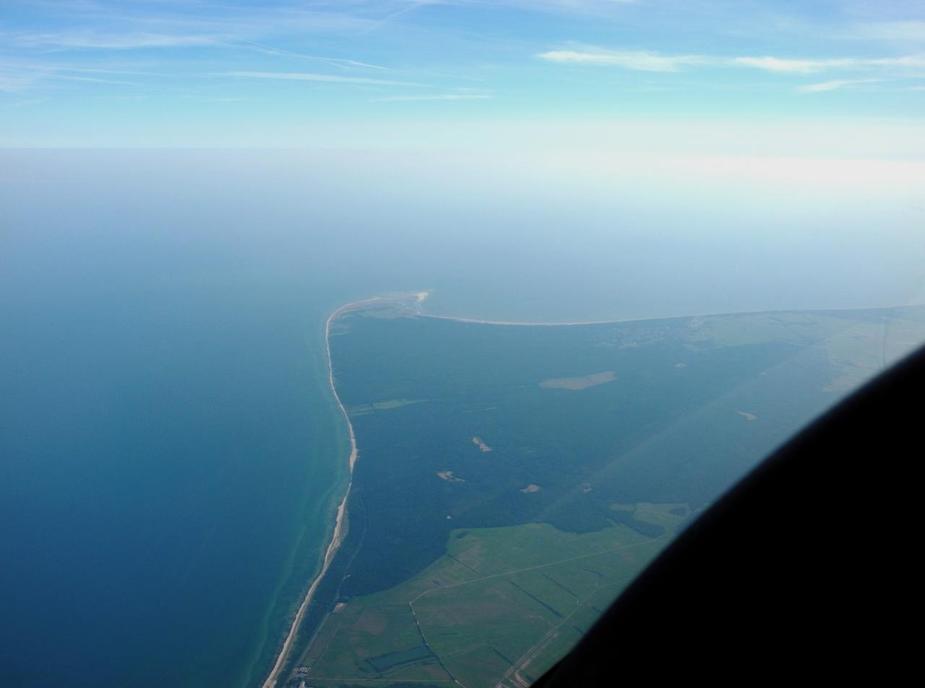
Today’s board menu.
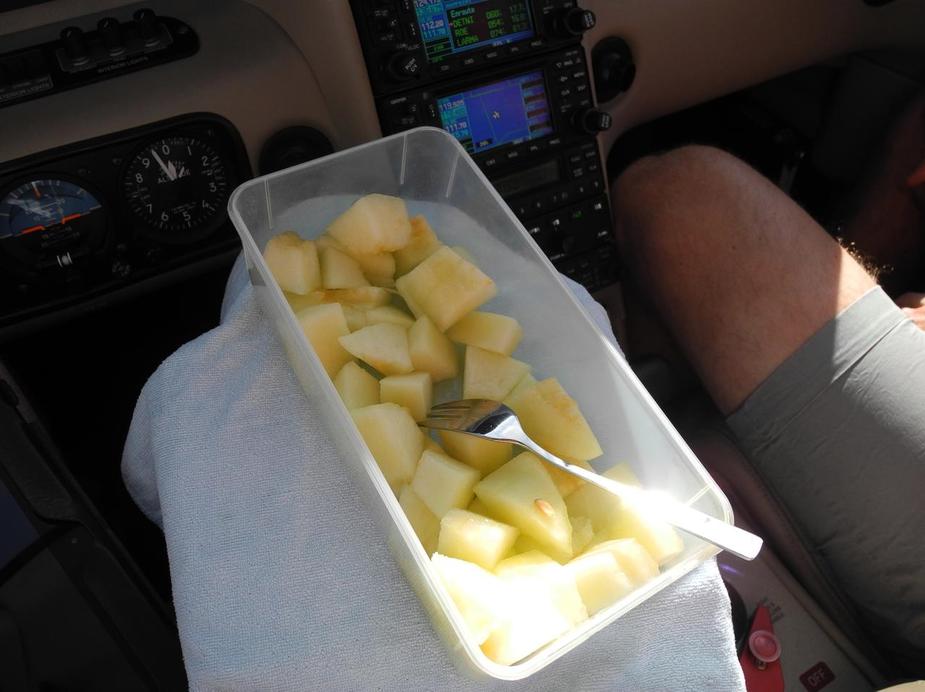
Once past the north of Rügen, we were on our way to Bornholm. Shortly after I took this picture, we were handed over to Sweden Control and cleared direct to LARMA. Ground speed settled on about 153 knots.
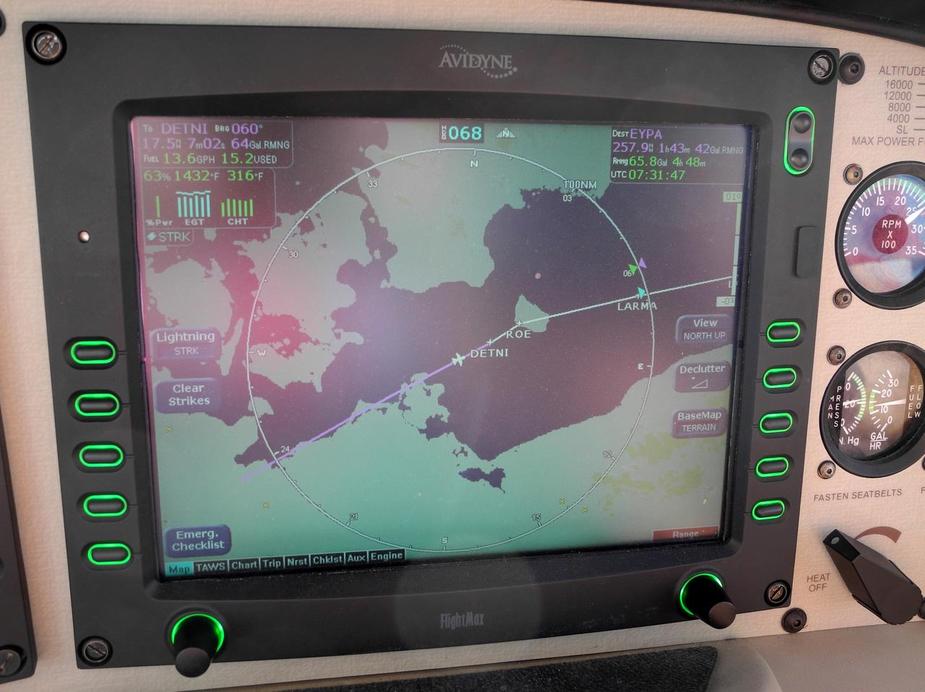
Here’s Bornholm, which, due to the shortcut given by Sweden, we now passed slightly to the south.
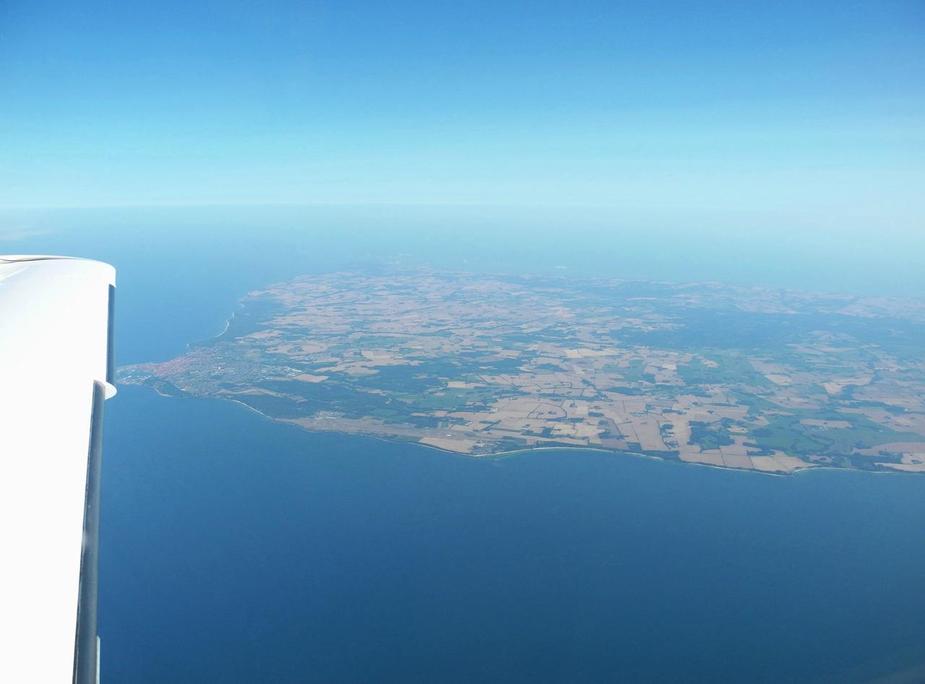
To the left is the island’s airport, EKRN. A bit further in the backgound, the main town on Bornholm, Rønne. Bornholm is good for a few days of relax. The beaches in the south of the island are very nice.
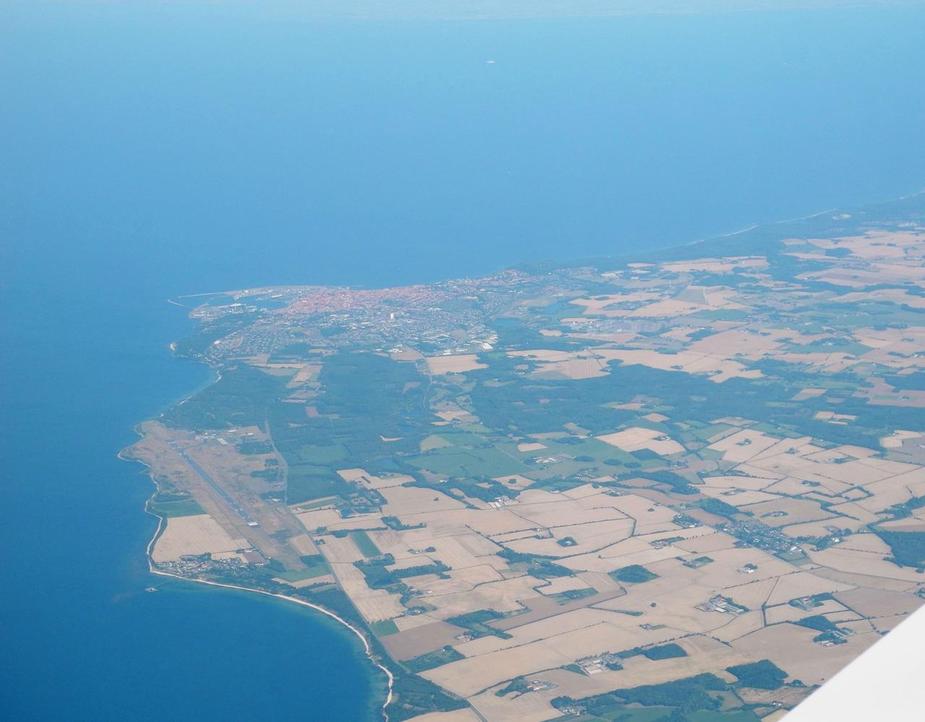
All pax asleep.
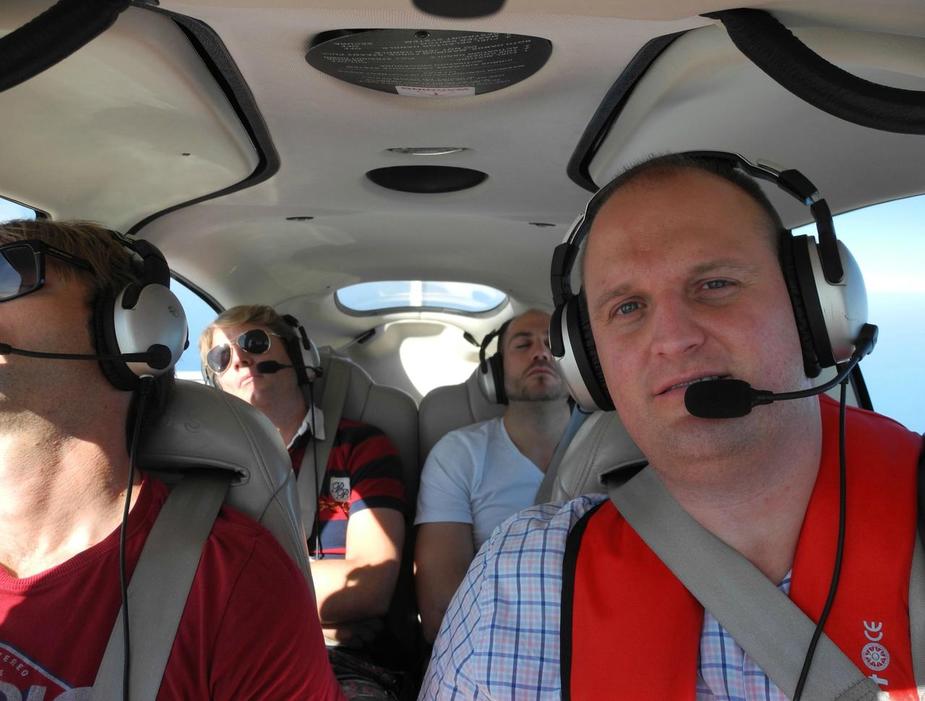
The transition through Russian airspace was seamless. We were immediately cleared to TIGNU point. After that, Palanga Tower (doing Approach Control as well) cleared us to SOMPU, one of the CTR’s entry points. The poor Avidyne base map unfortunately only covers Central Europe.
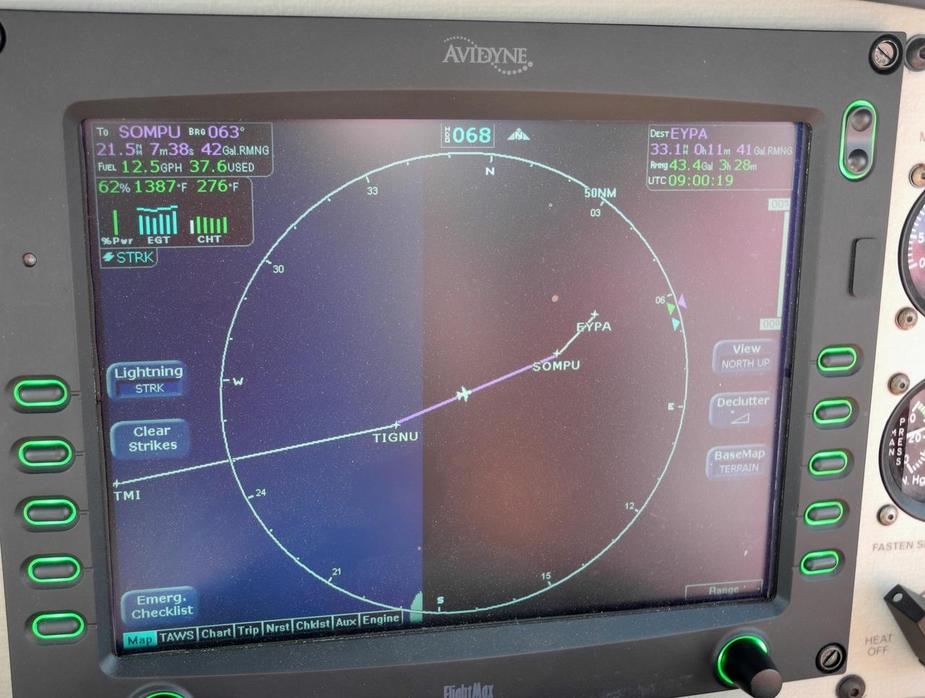
Cumulus clouds announcing the vicinity of land.
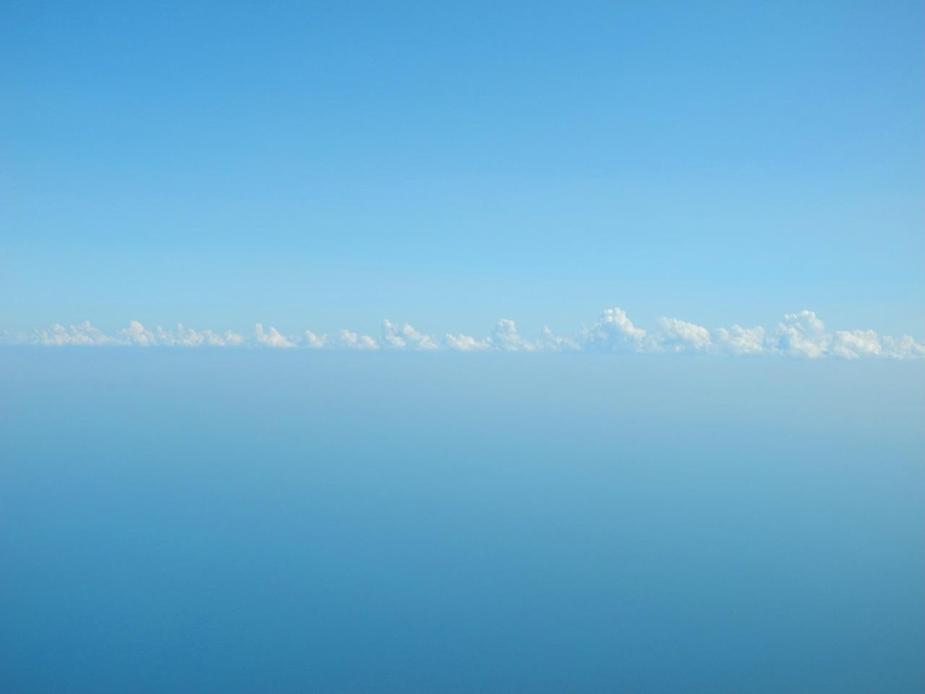
My pax, now back to “awake” status. None of them had ever been to Lithuania before. Oh, by the way, all being sportsmen, they were quite excited about the pulse oximeter, comparing their numbers with each other.
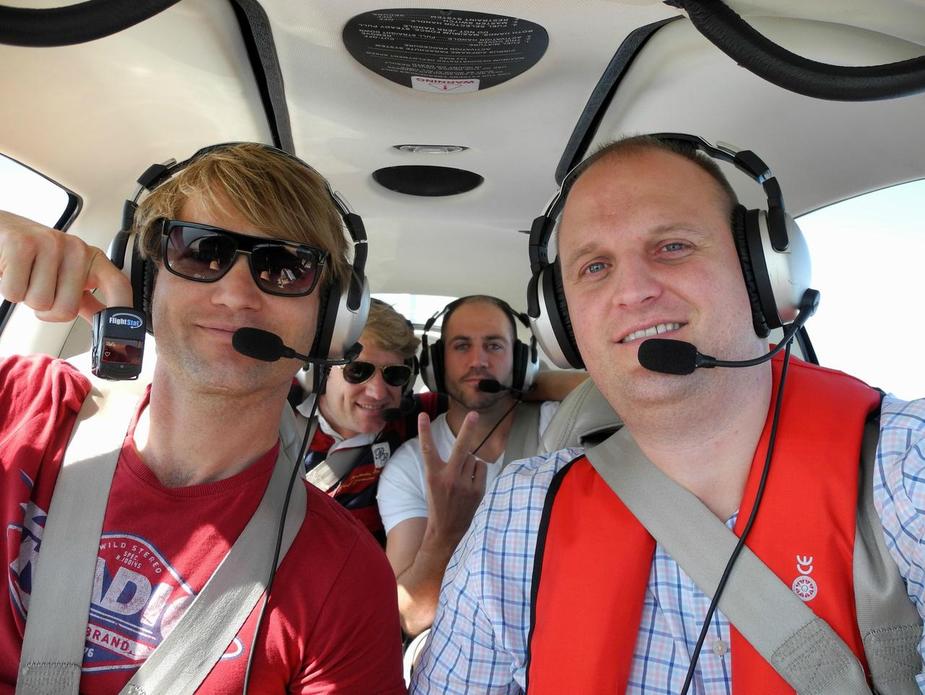
A very faint view of the harbour of Klaipeda and the northerly end of the Kurische Nehrung (English: Curonian Spit).
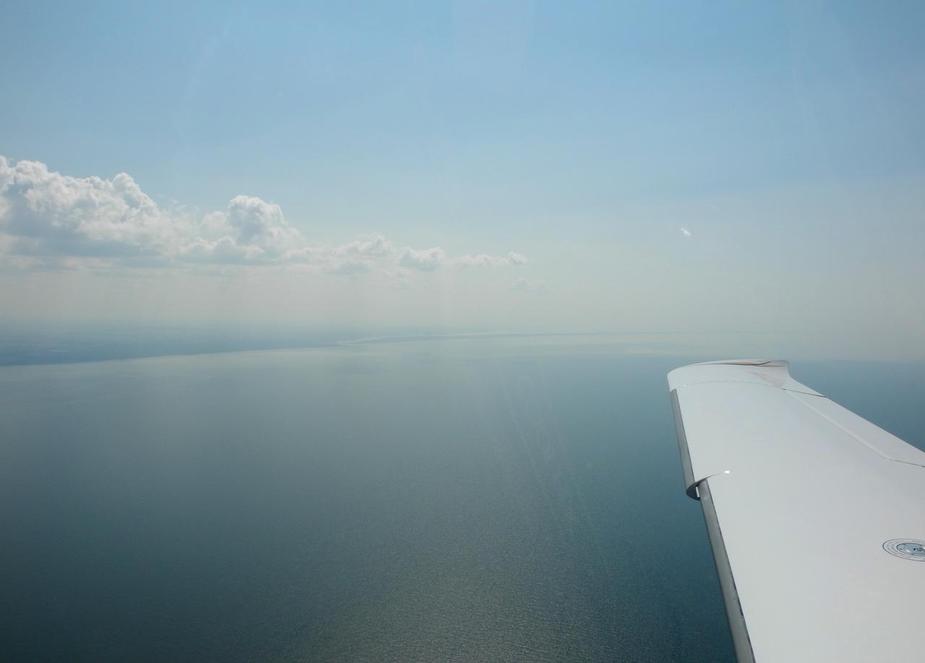
In Palanga, runway 01 was in use and we opted for a visual approach. Here’s our destination Palanga with its Pier. The airport is in the background.
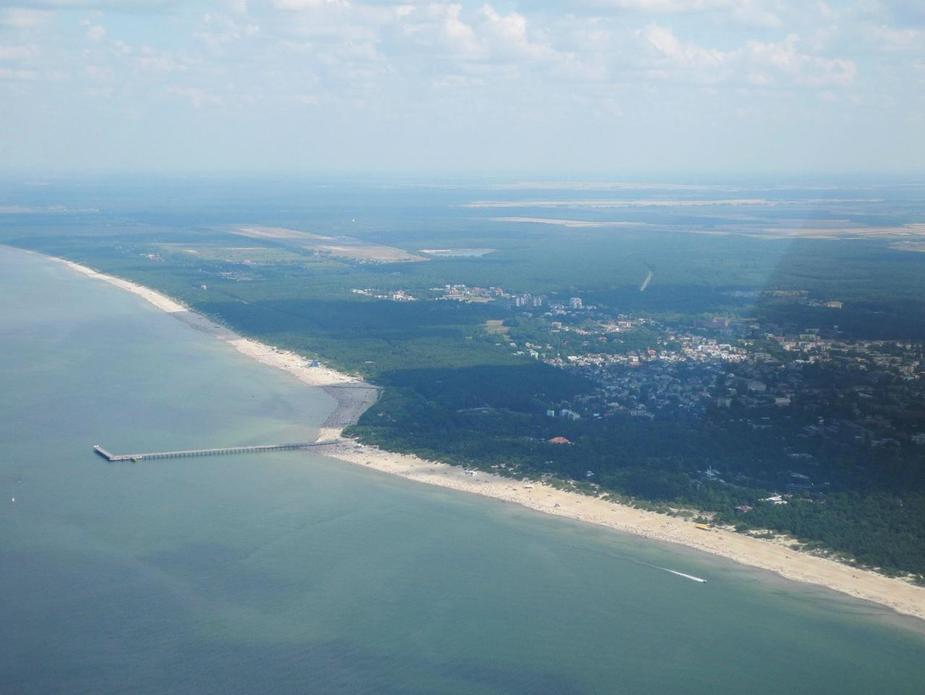
Right by the wingtip, you can see Basanavi?iaus street, Palanga’s entertainment lane, leading all the way up to the pier.
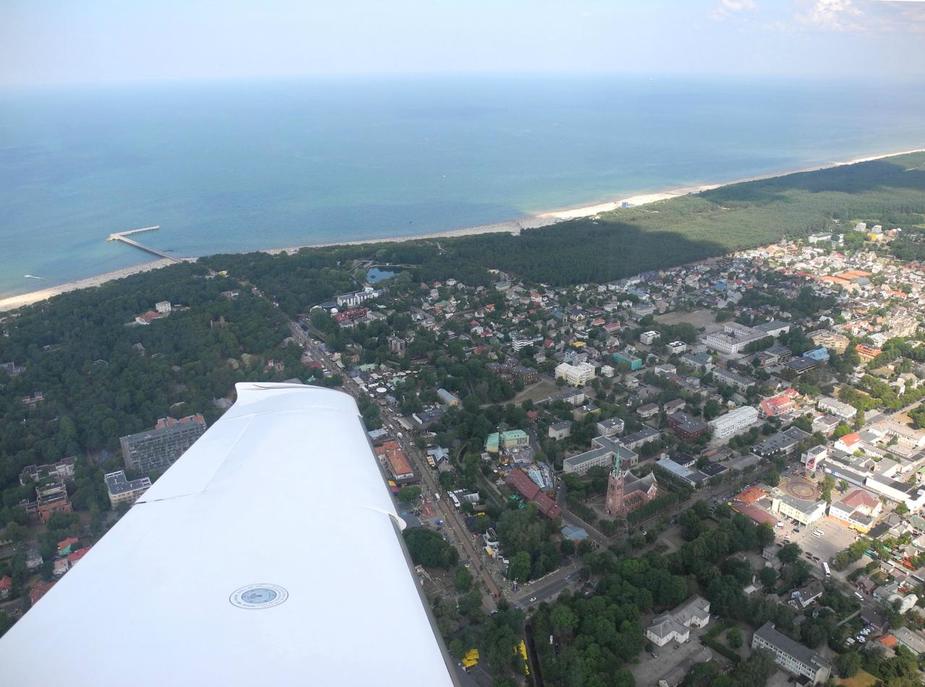
Long final.
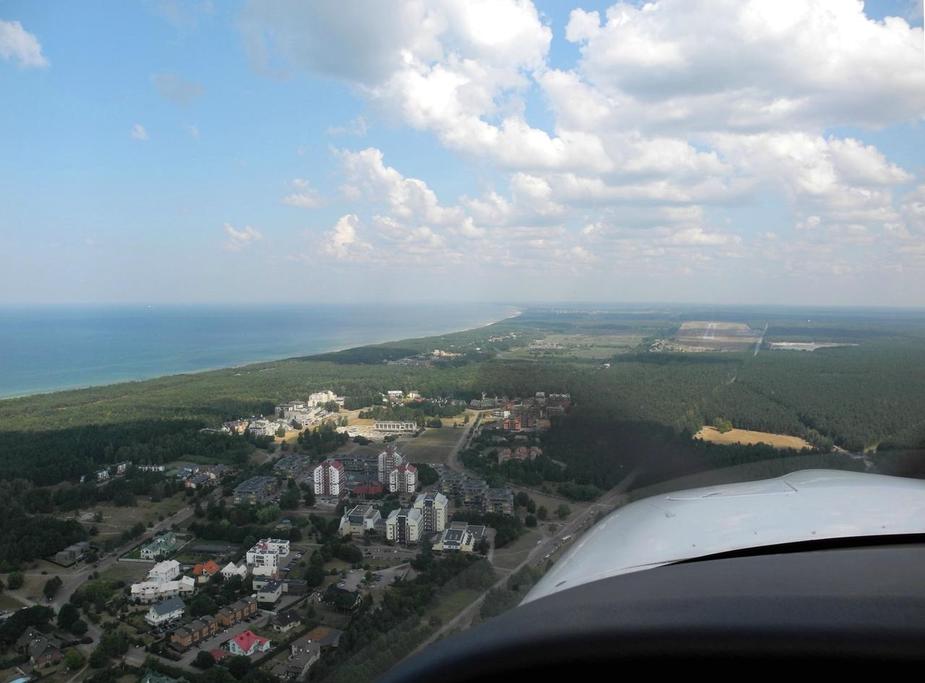
Short final. Landing came after two hours and thirtyfive minutes enroute.
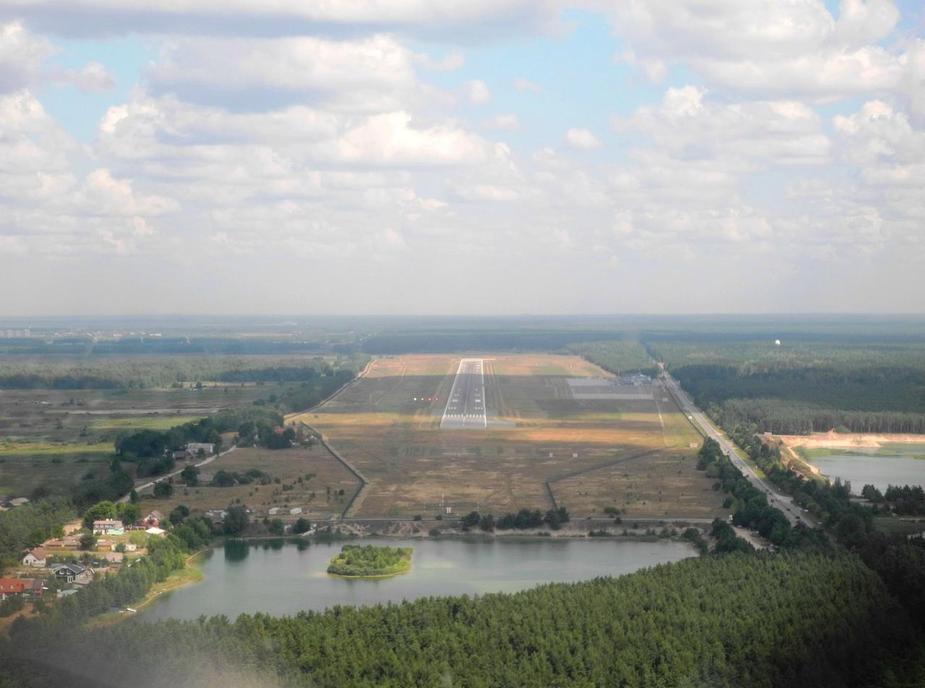
Taxying in. Sadly, despite the high season and the perfect weather, the airport was deserted.
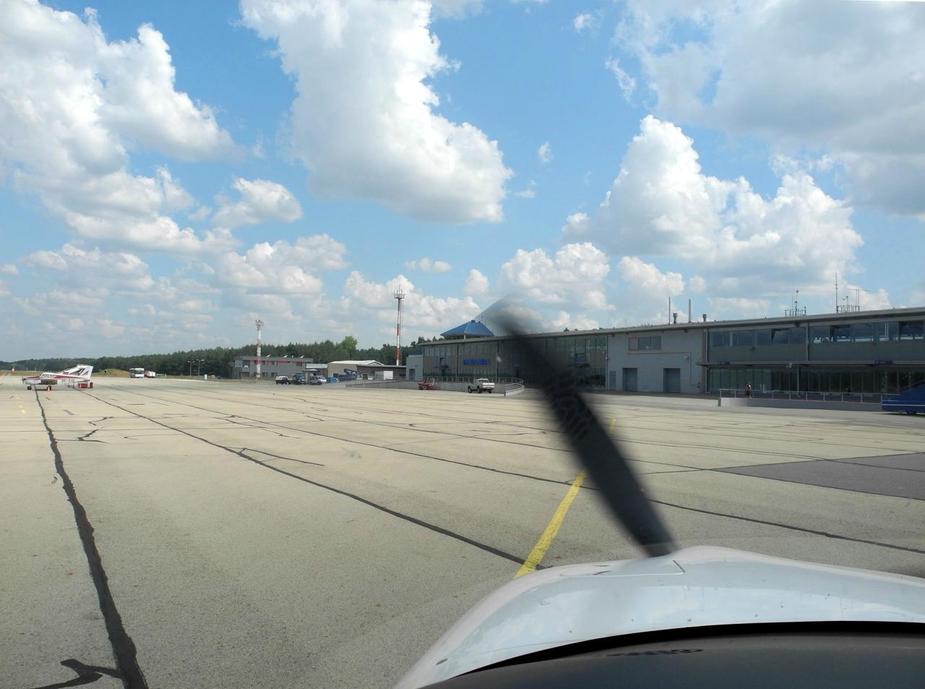
One old SE-reg. Piper Cherokee parking there. That was it.
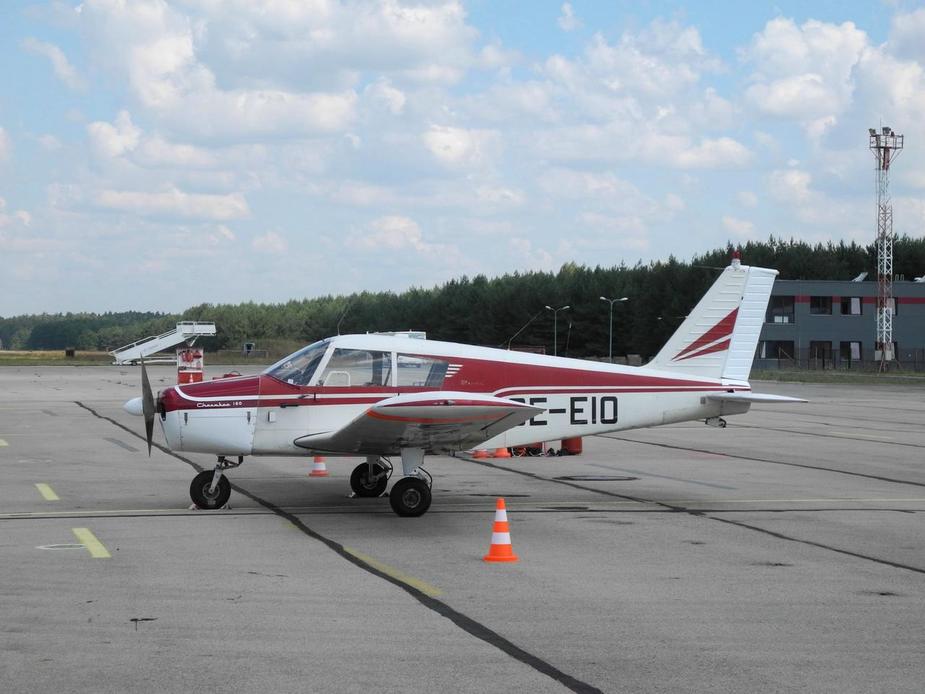
Handling was very quick and painless, almost to be called “pleasant”. 
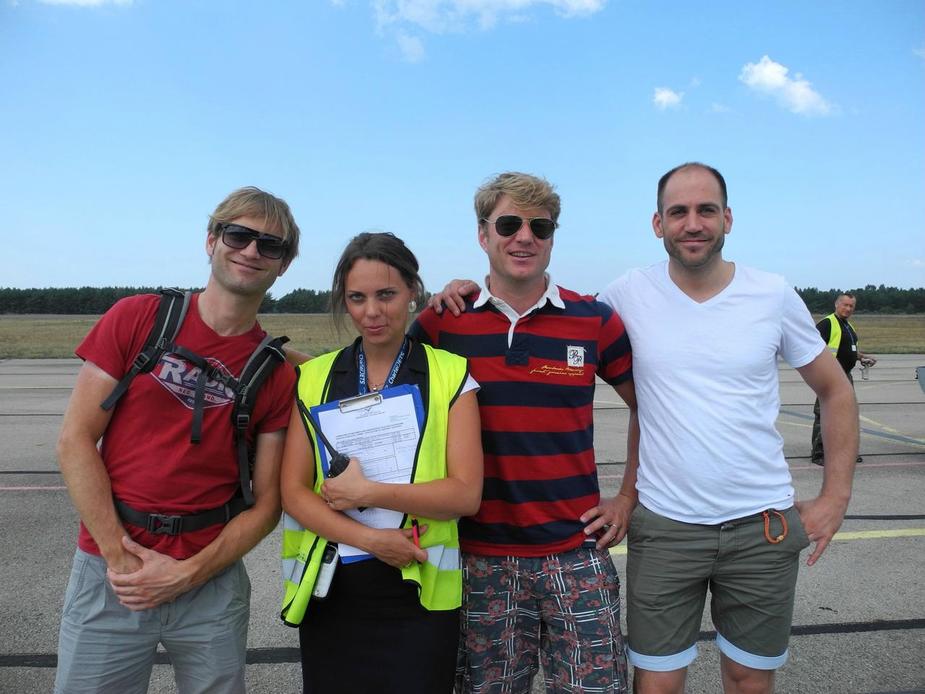
Until recently, Palanga used to have a very old and tired Avgas truck but seemingly, it has now finally fallen apart. Instead, they now have a small tank on wheels which they put in tow of the JET-A truck.
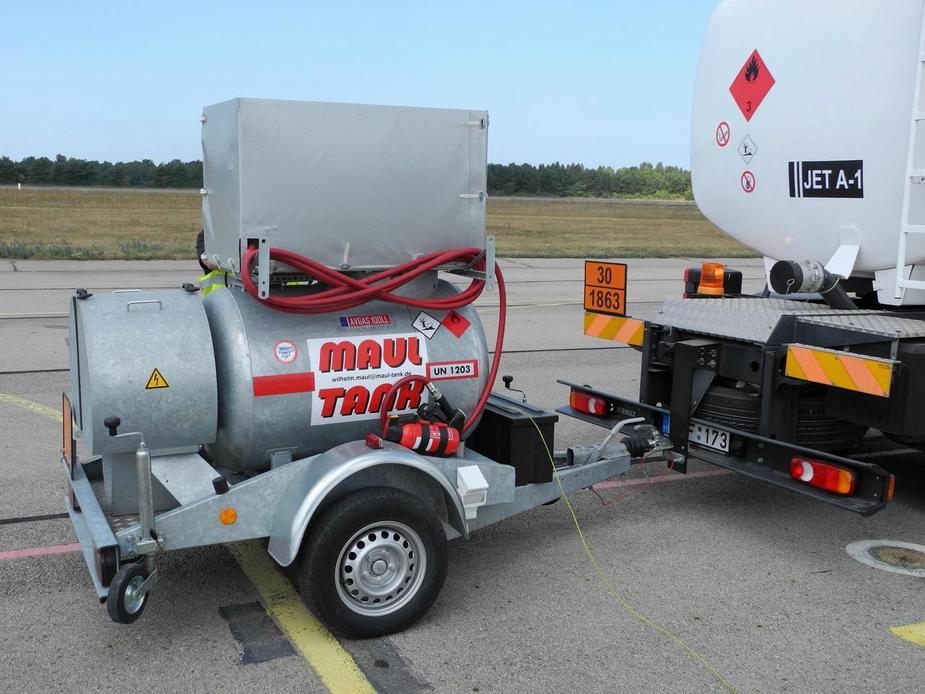
Avgas is expensive there (3.30€), so we only took what was required for a safe trip back. We then put on the cockpit cover. Thanks to EU funds, the airport is absolutely slick and tidy. Compare with Lübeck airport… 
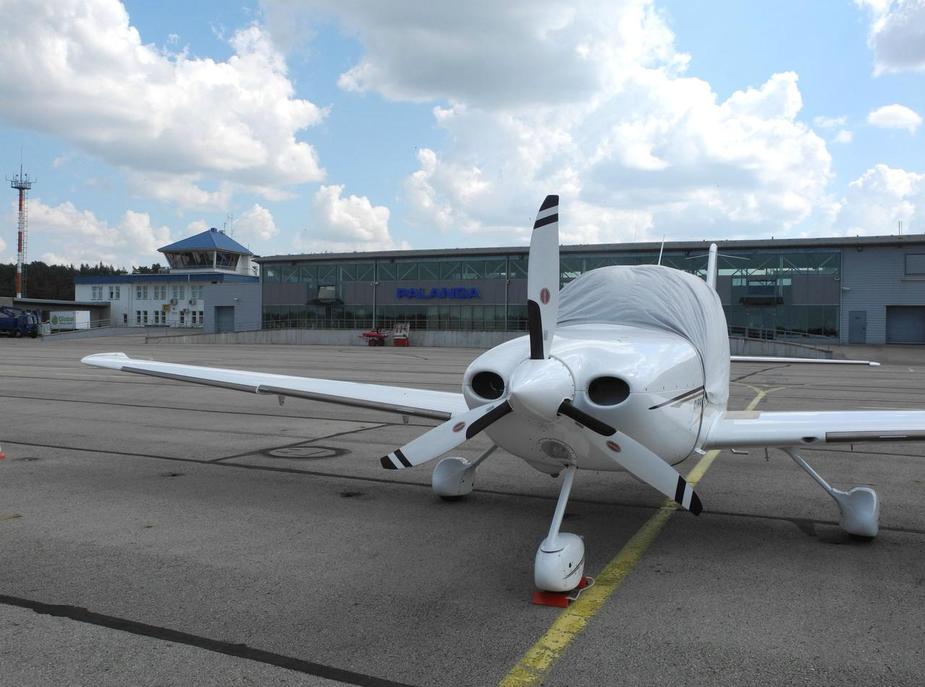
A taxi brought us to our booked apartment and an hour later, we were were on Basanavi?iaus street, looking for some lunch.
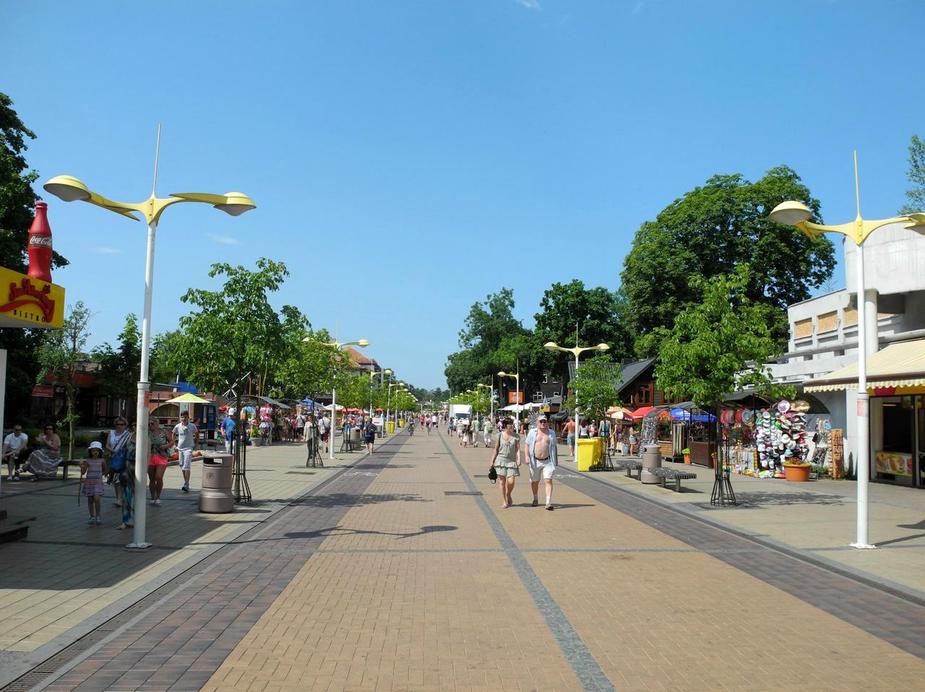
Food and drink is still incredibly cheap in Lithuania. A draught pint of the very good Lithuanian beer is about 1.50€ in the restaurants. A big Pizza is 3.40 and and meet dishes range from 5 to 10 €. As of now, Lithuania still has its own currency (Litas), but they will introduce the Euro in the beginning of 2015.
I am sorry if all this sounds a bit like an advertising brochure for Lithuania, but it really has a special place in my heart and I find it sad to see so little GA tourism there in summer. Granted, for most people with a 100 knot airplane, it’s a bit of a trek to get there, especially from places like the UK, France or Switzerland. But still, it’s really really worth it. Nature is mostly untouched in that part of Europe. In summer, you can see storks everywhere. With Vilnius, Kaunas and Klaipeda, Lithuania also has three very interesting cities.
Here’s Palanga Pier.
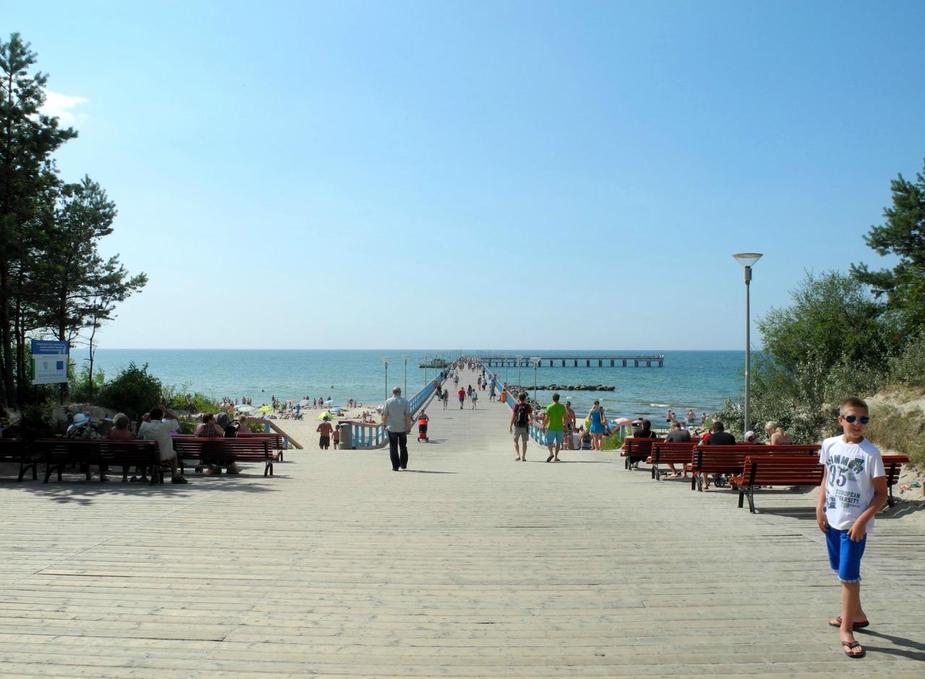
The beach in Palanga is fantastic – certainly one of the best ones on the Baltic Sea. The sand is fine and clean. And so is the water. But beware: it doesn’t really go much above 19°C.
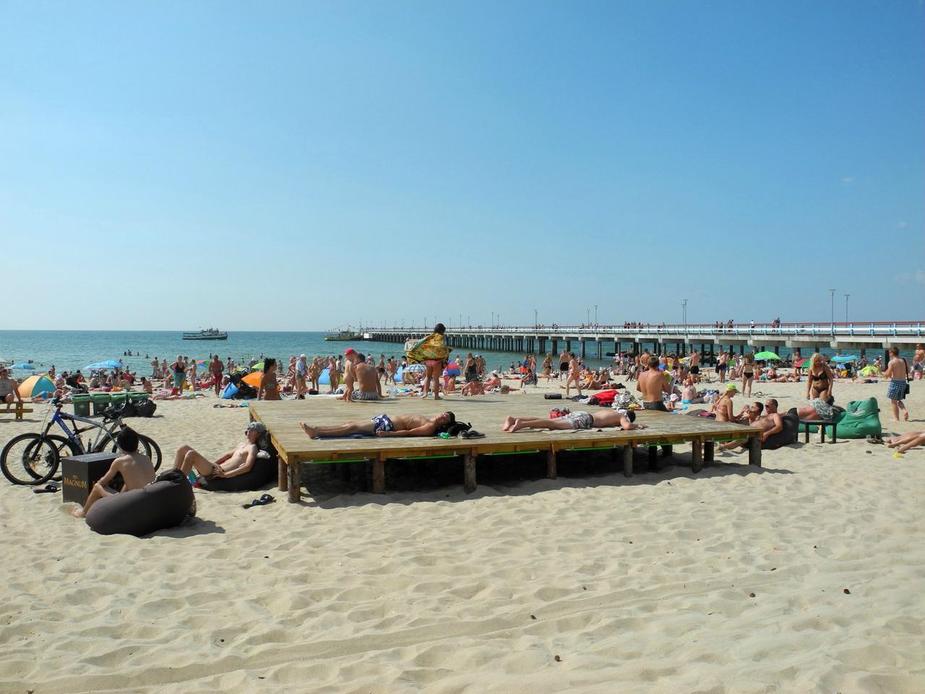
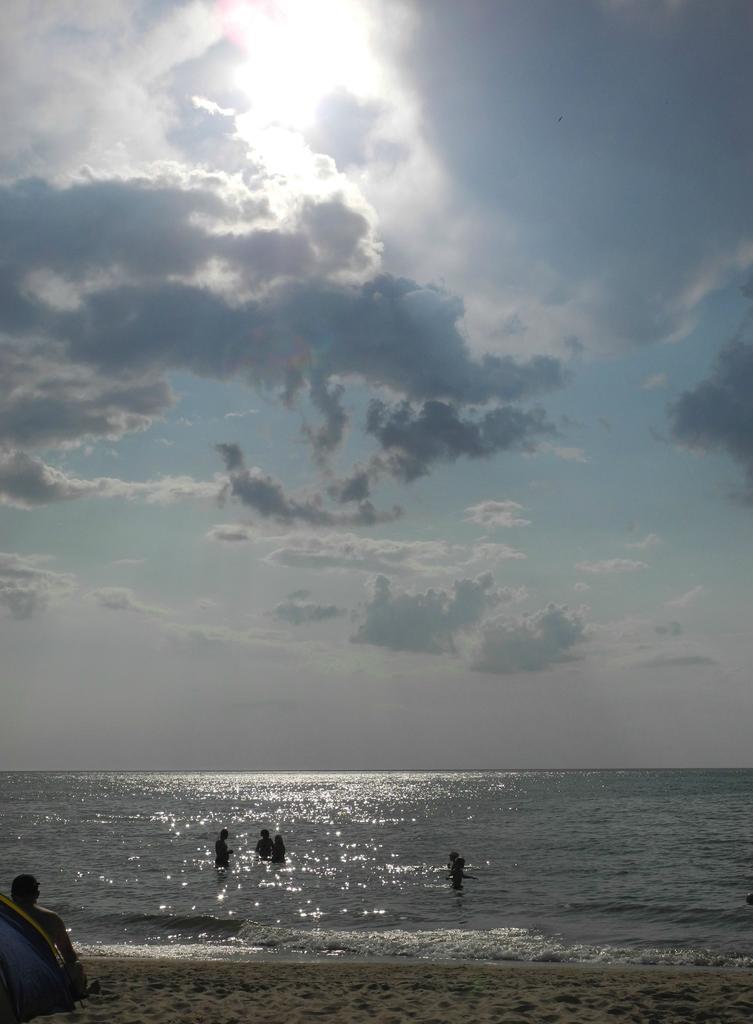
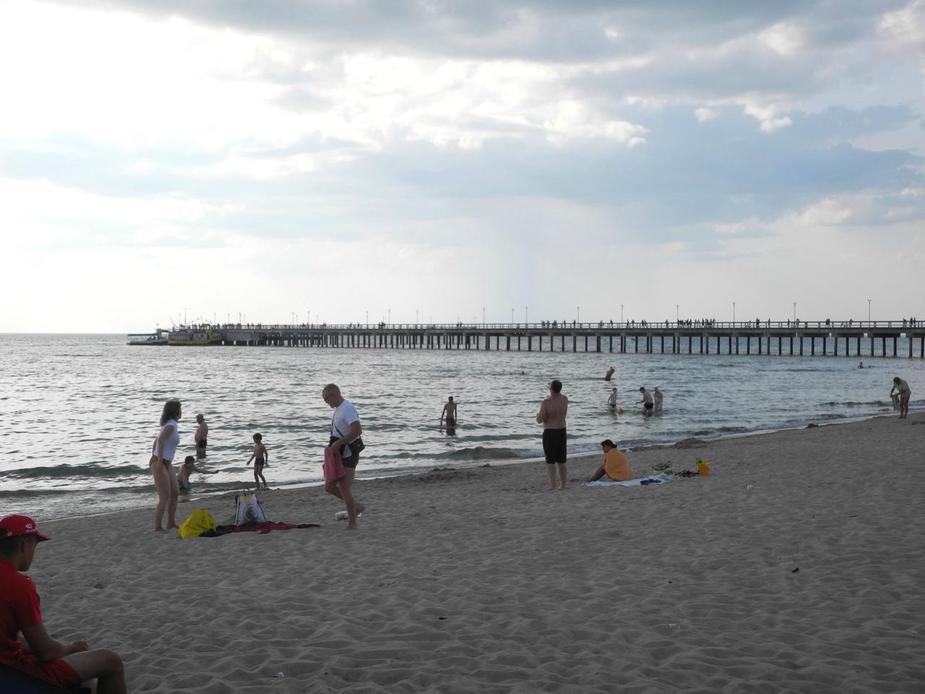
Needless to say, nightlife is fantastic in Palanga. I shall not say more.
Here are some impressions from early the next day:
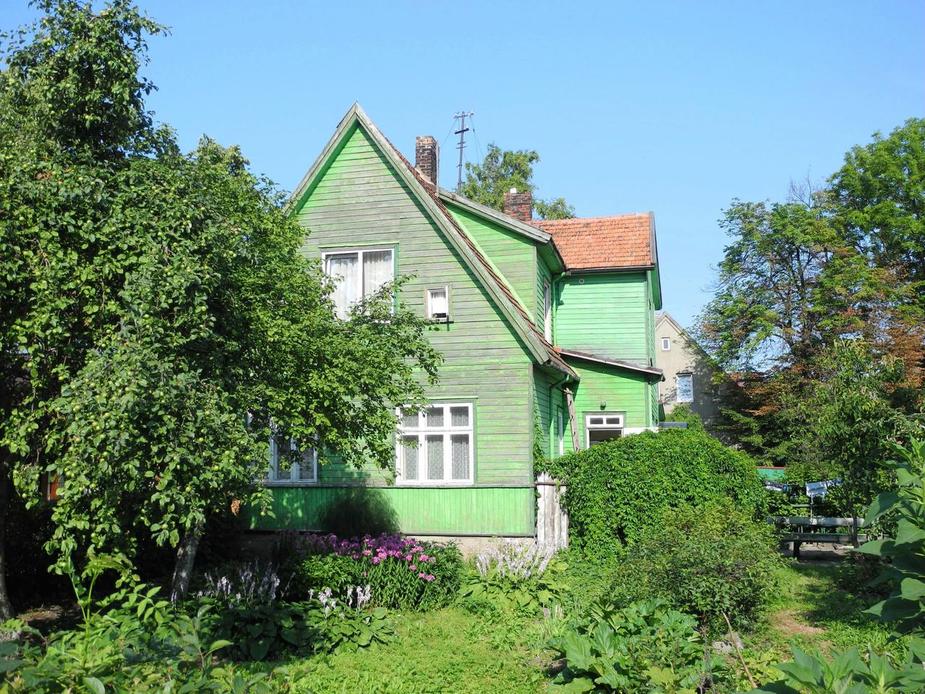
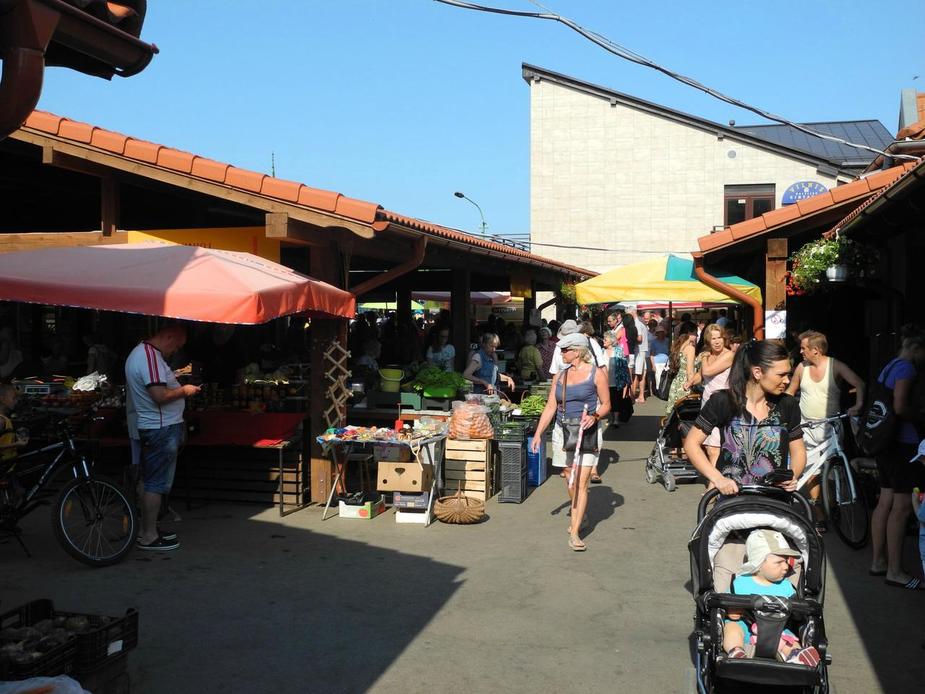
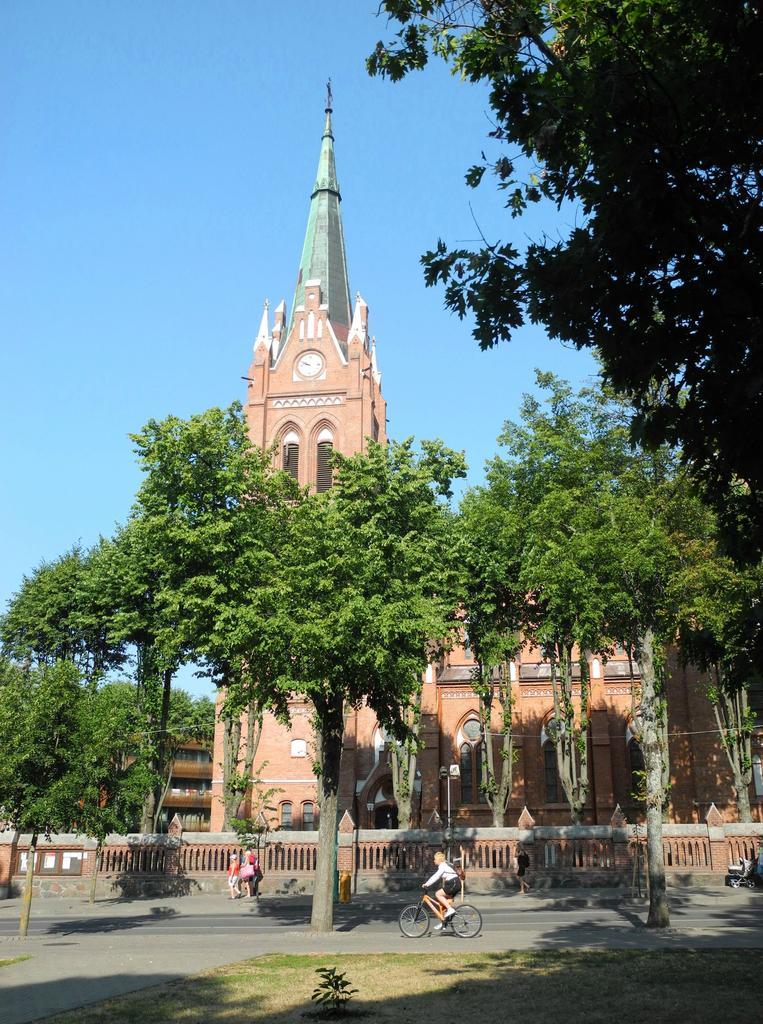
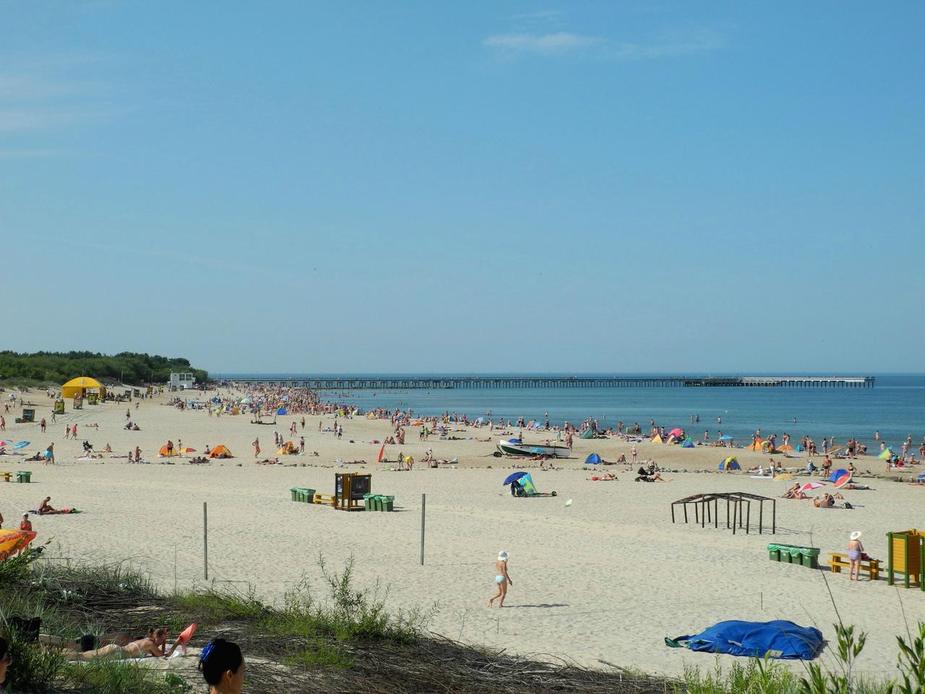
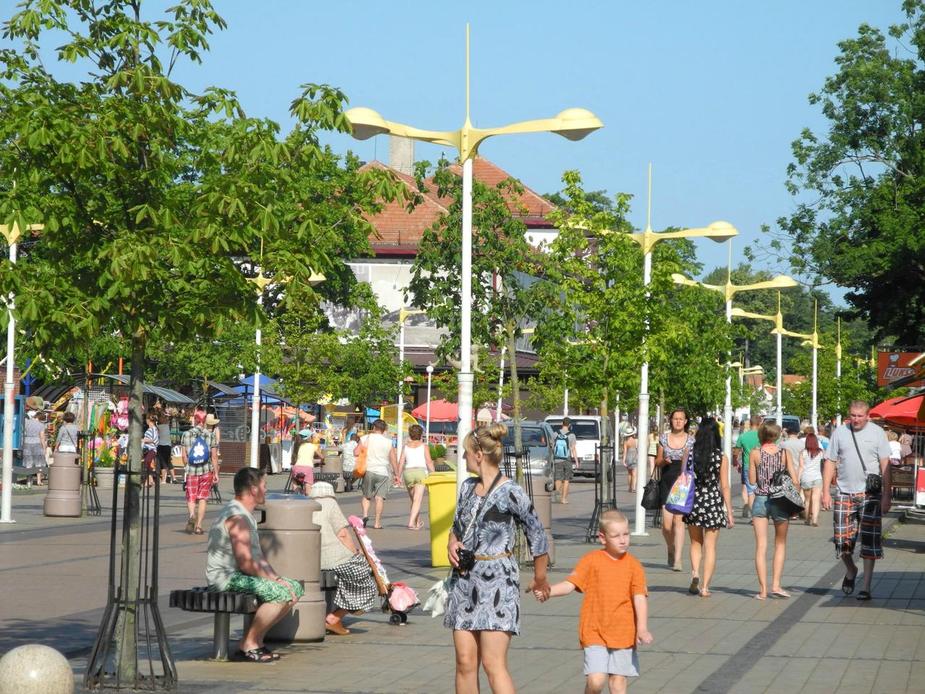
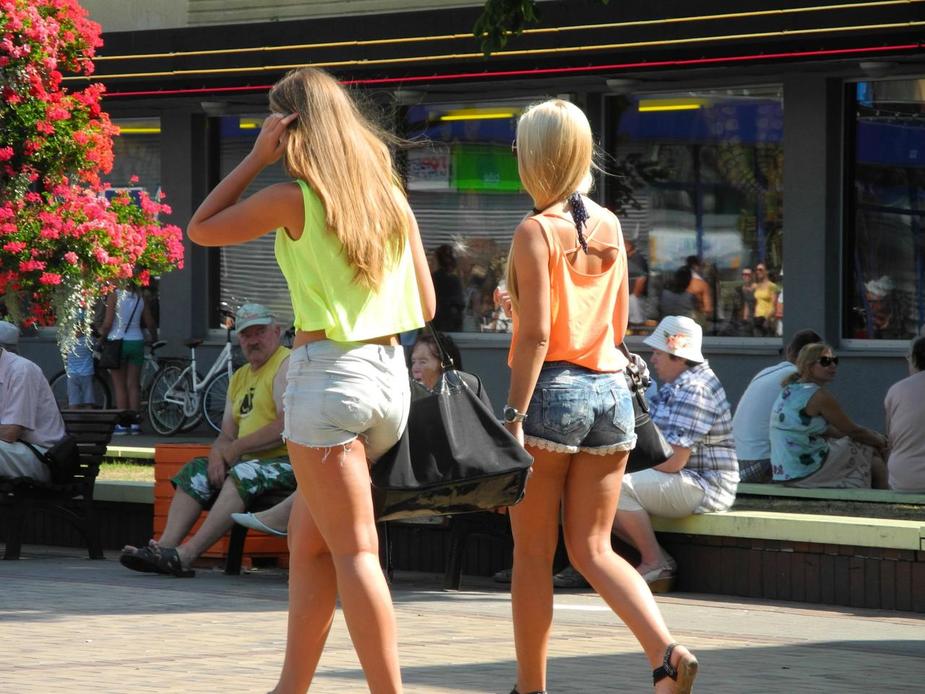
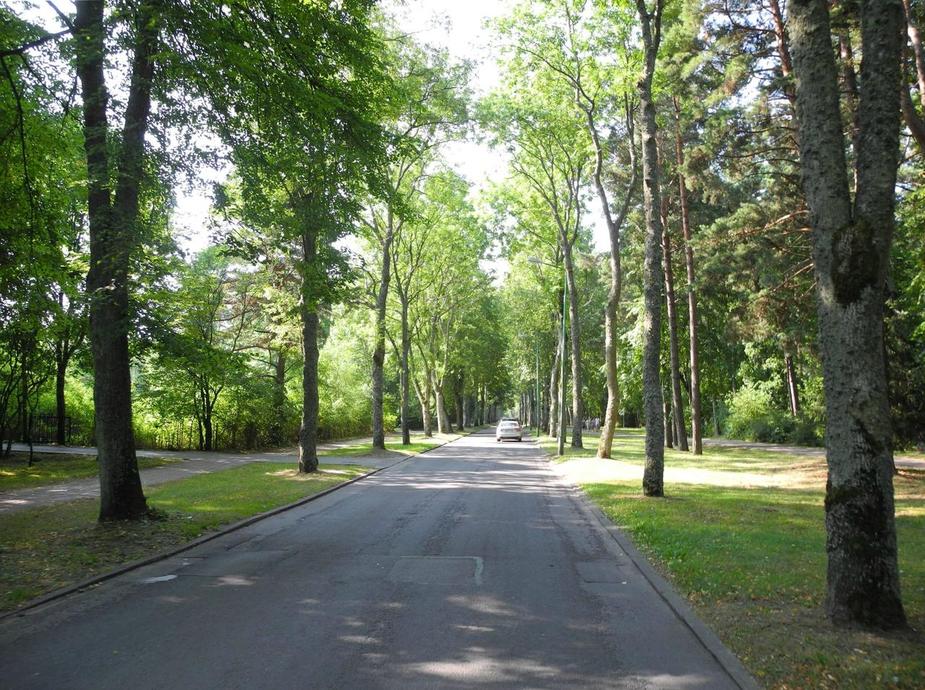
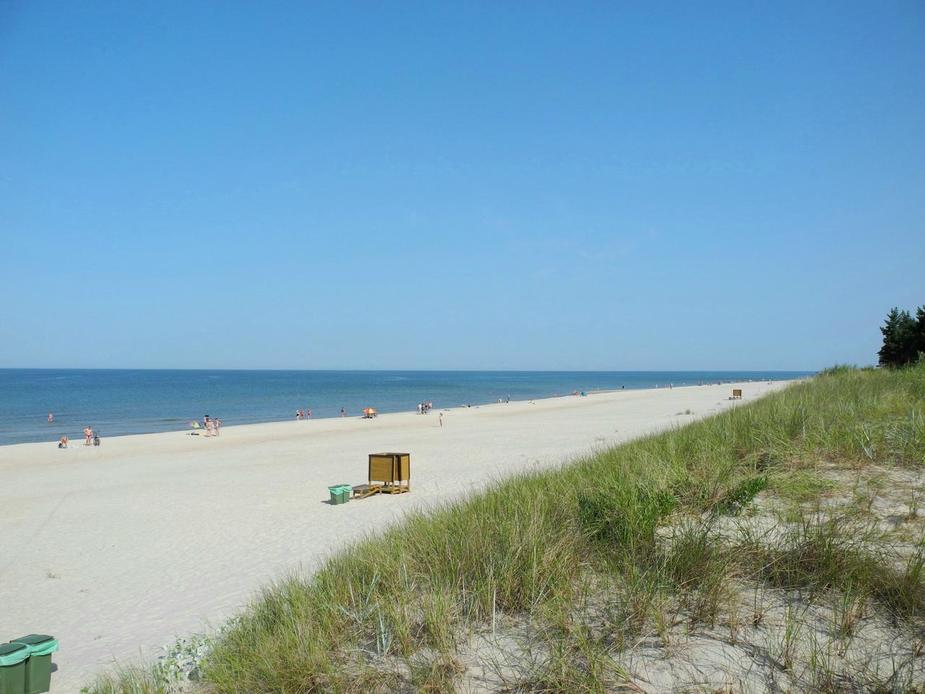
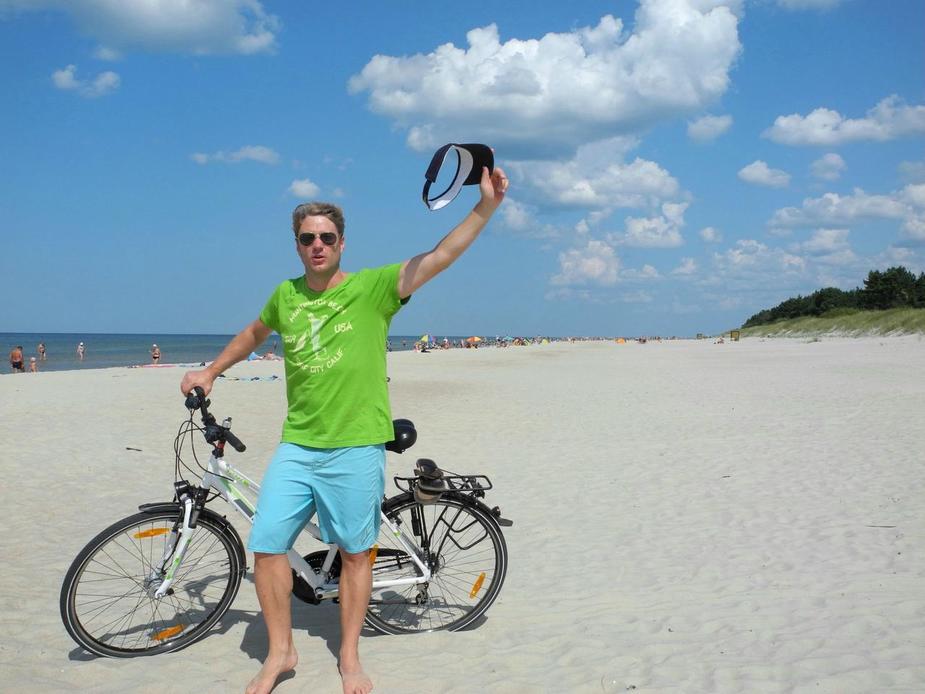
At lunch again.
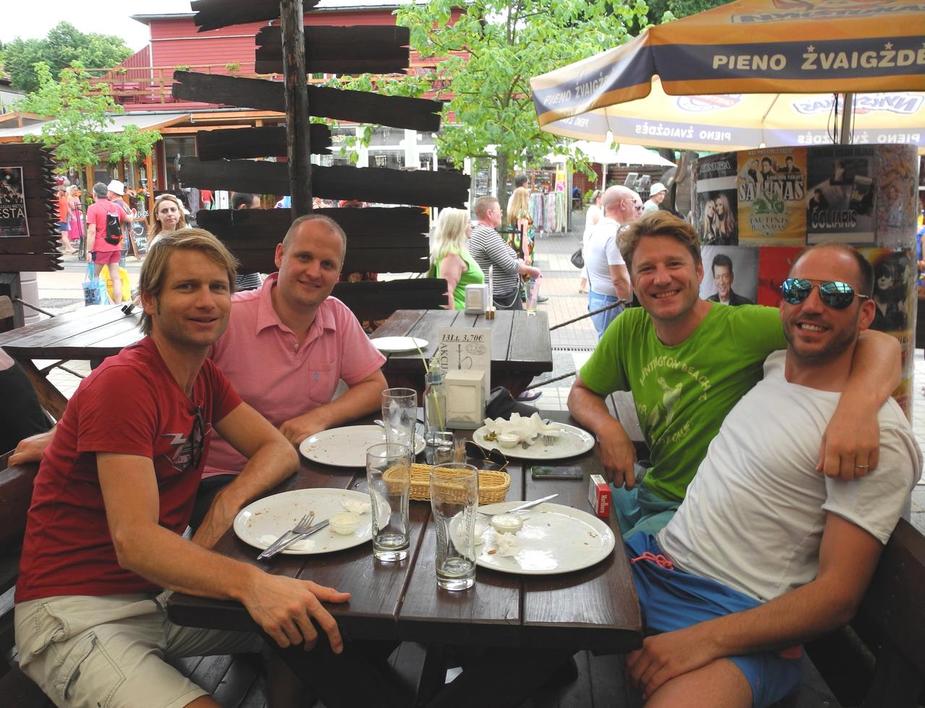
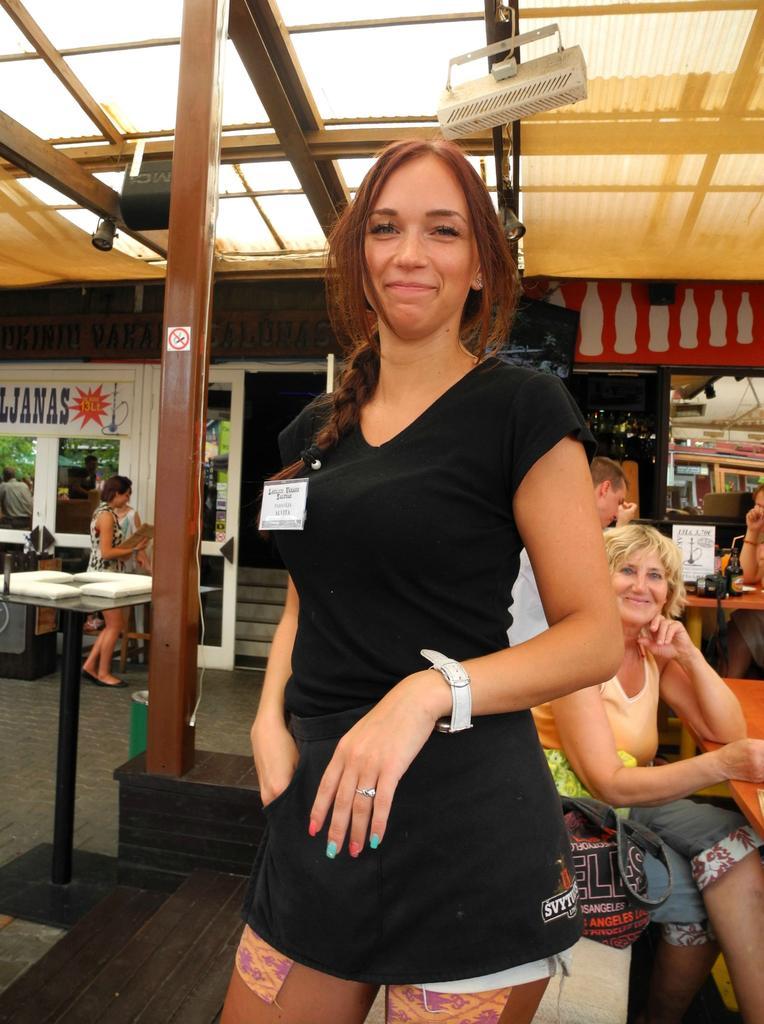
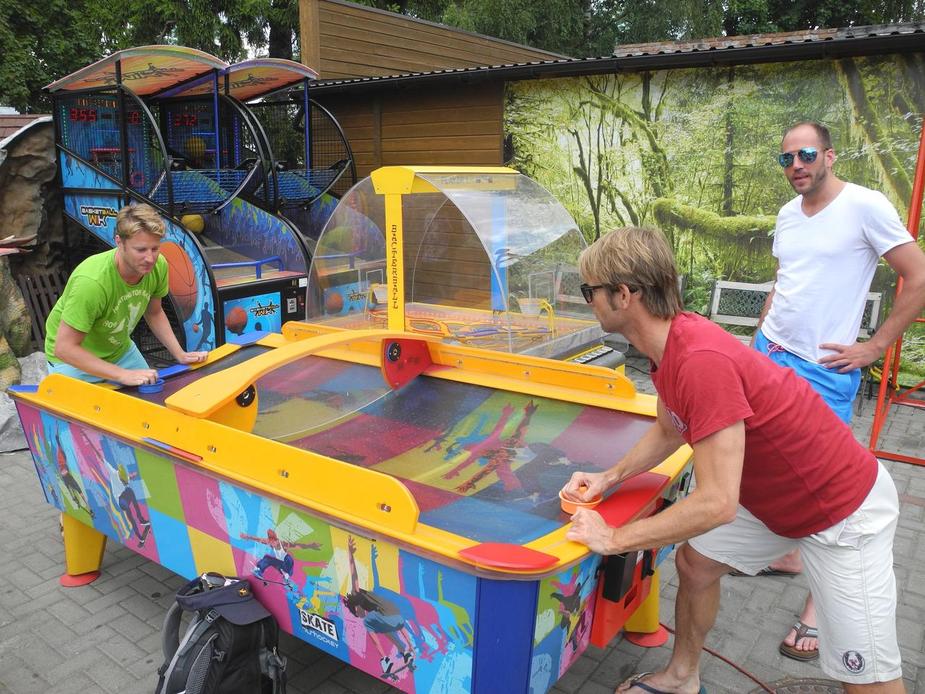
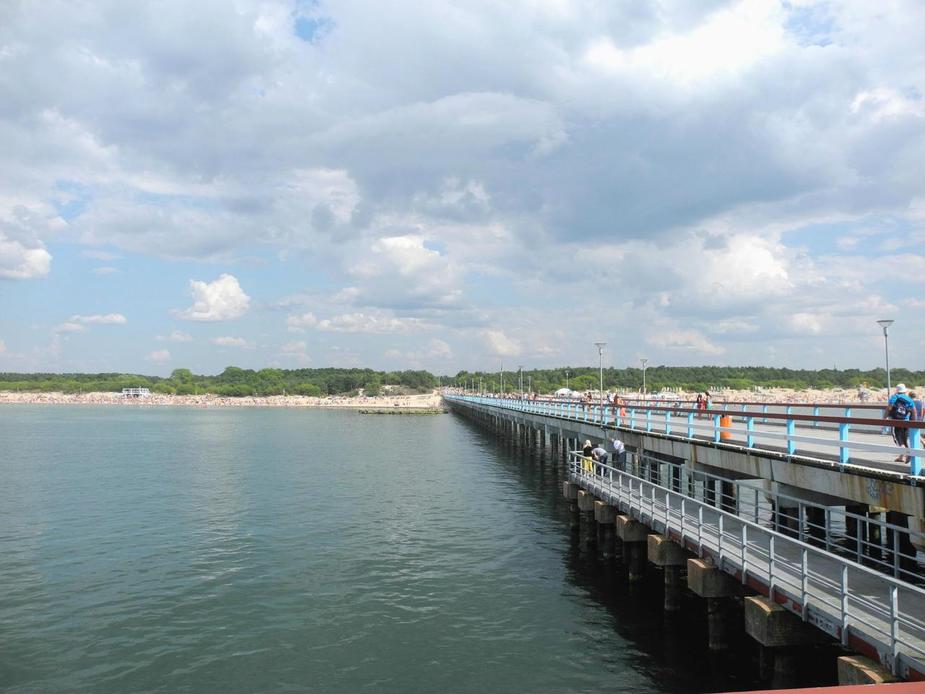
We also decided to spend our second evening in Klaipeda. Klaipeda is the third biggest city in Lithuania and their only harbour in the Baltic Sea. The distance from Palanga is only about 25 km and there are very frequent buses between the two places. A single fare costs 1.40€.
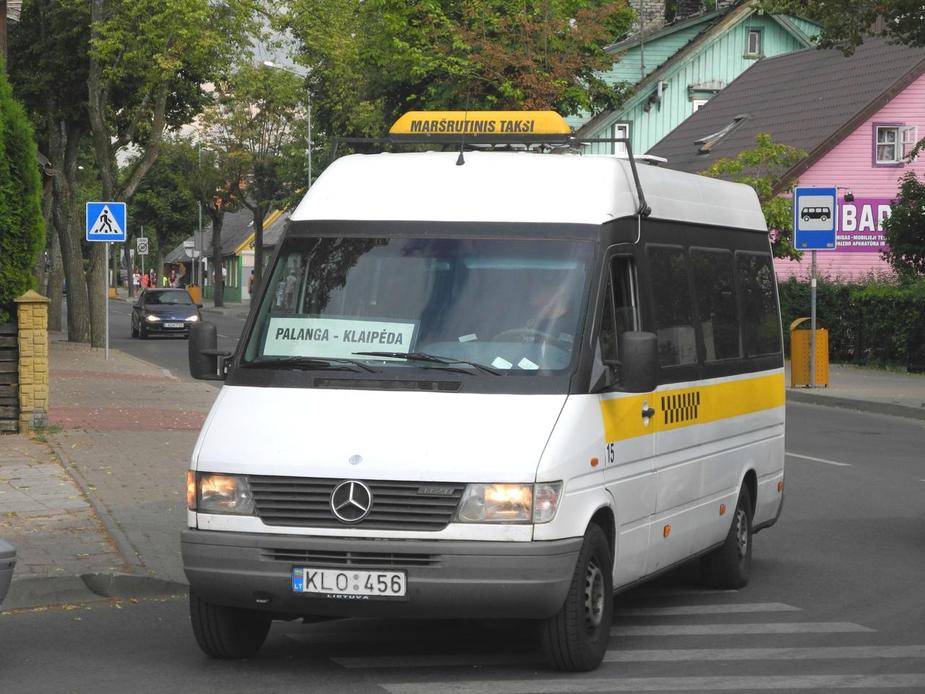
Klaipeda was great. That weekend saw the Klaipeda music festival and the whole old part of the city was a party mile.
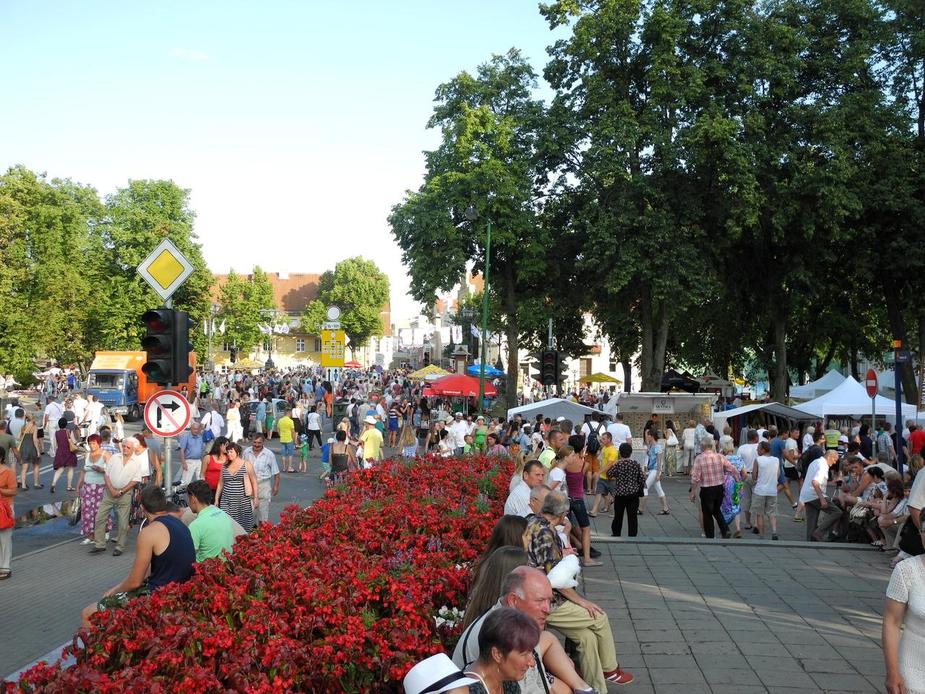
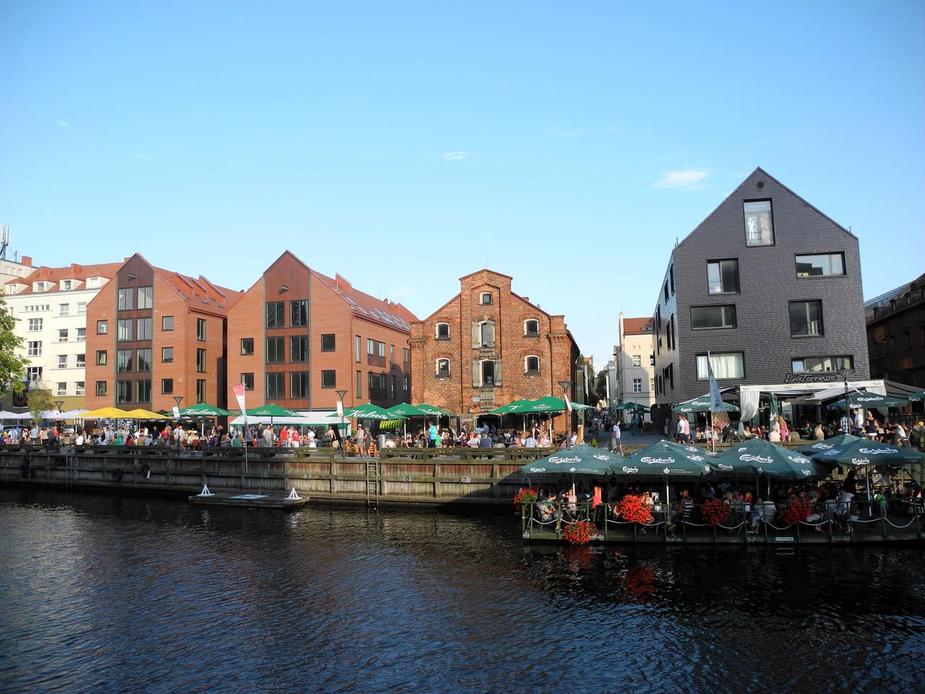
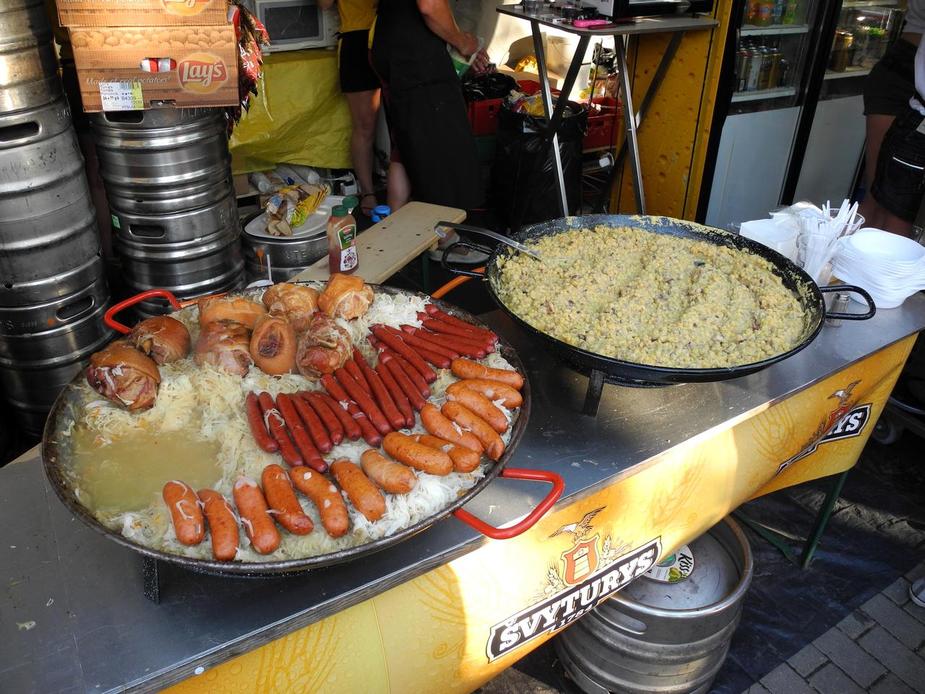
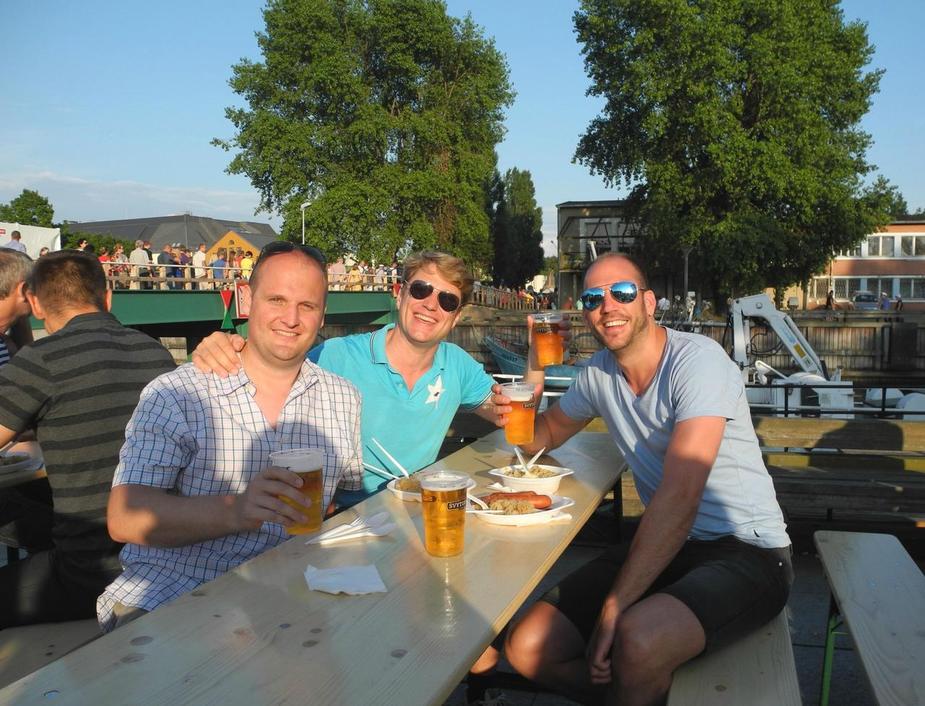
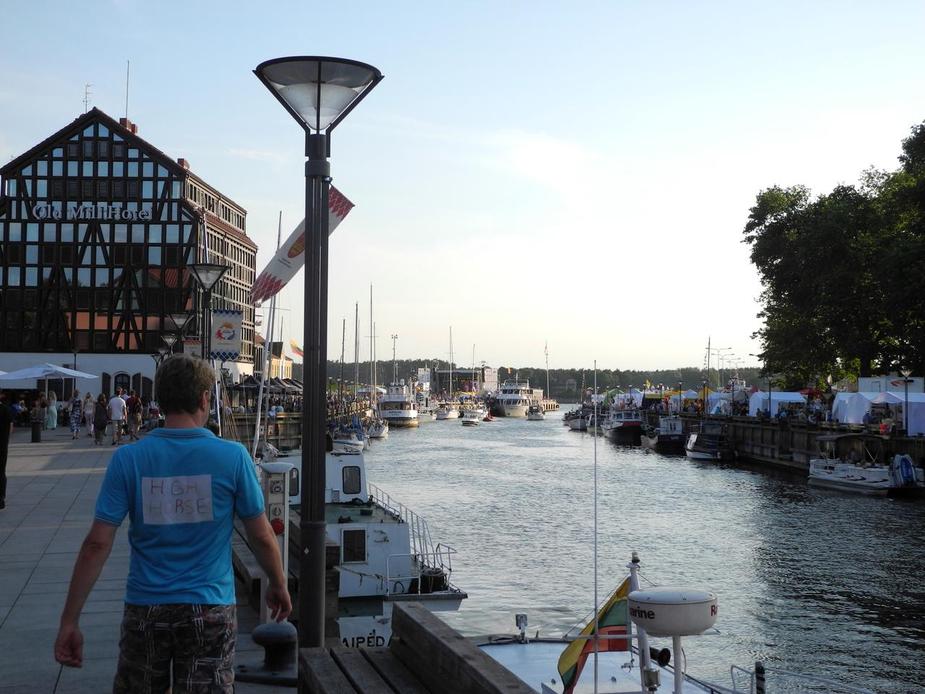
Pictures taken from the big observation wheel:
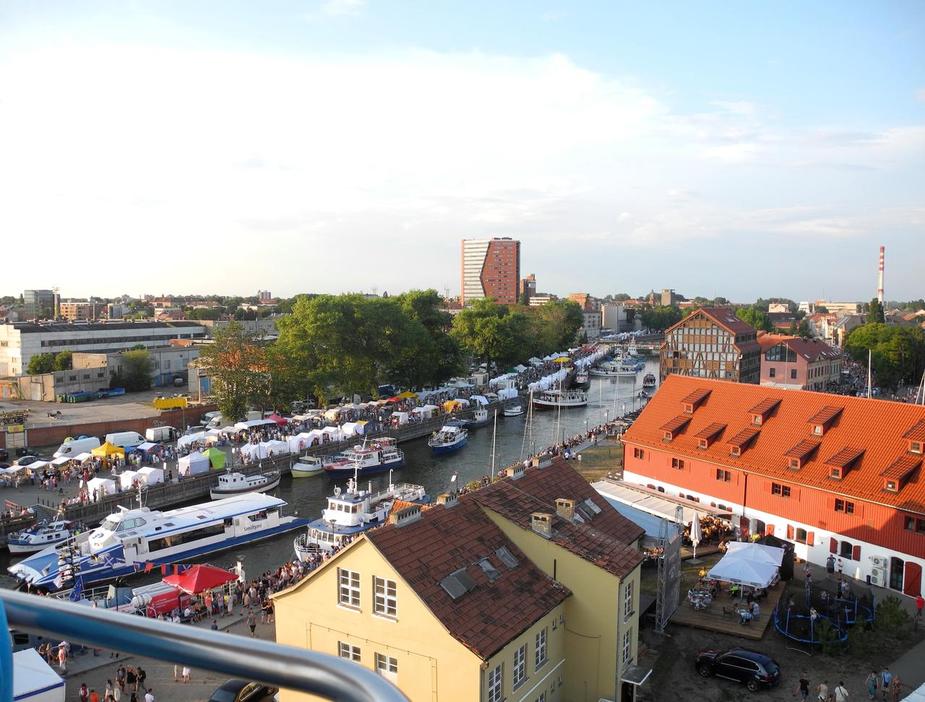
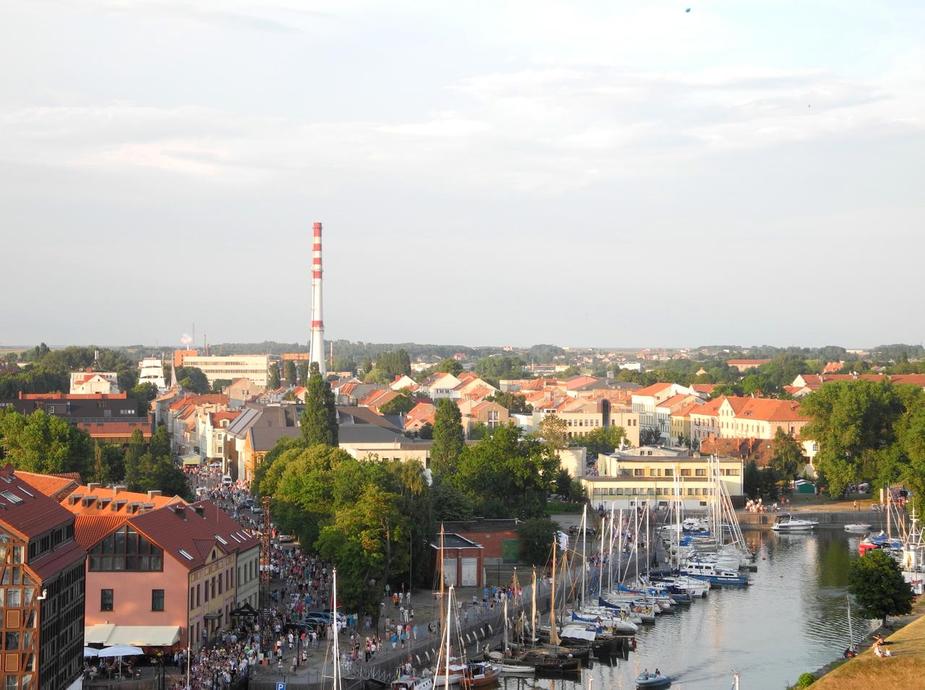
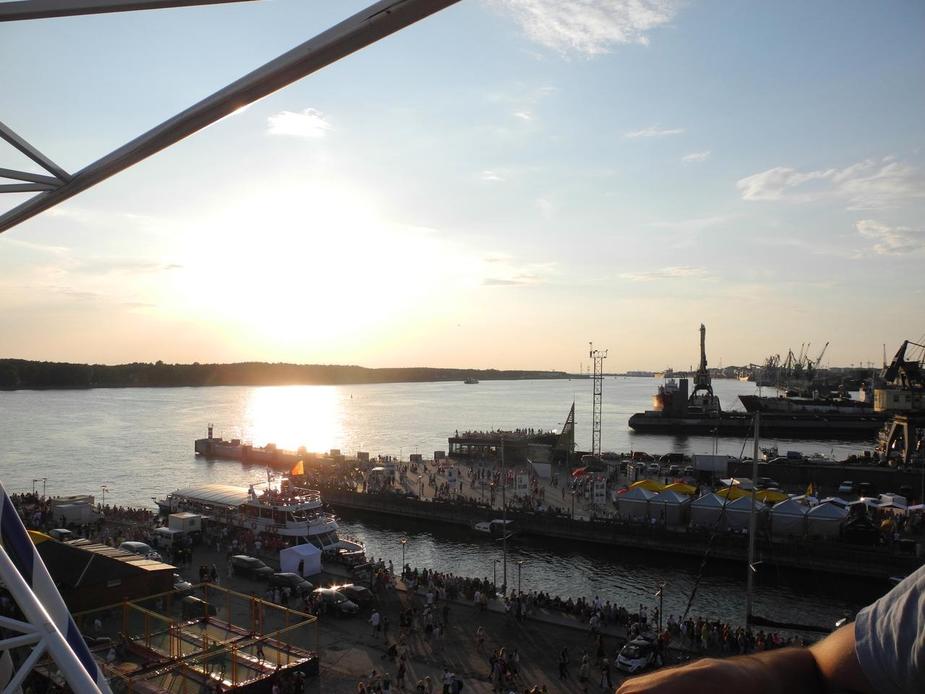
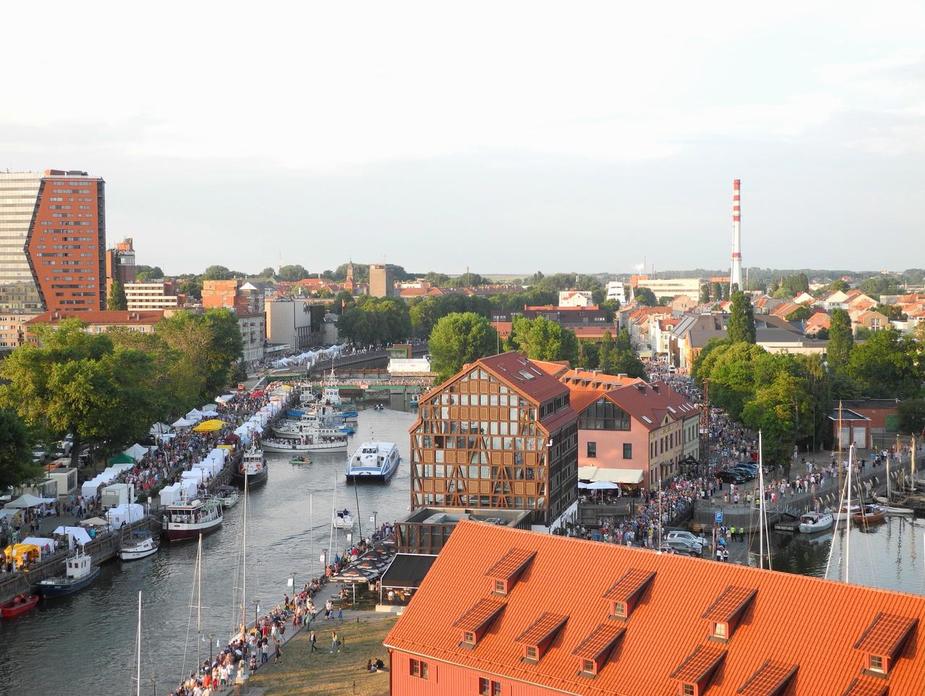
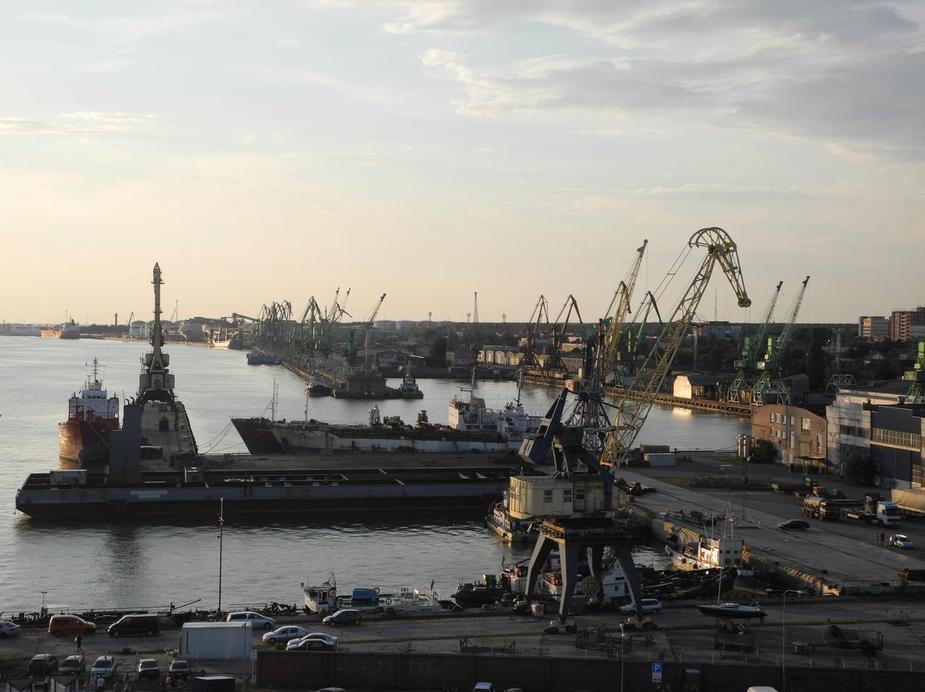
The Kurische Nehrung. Absolutely recommend to visit.
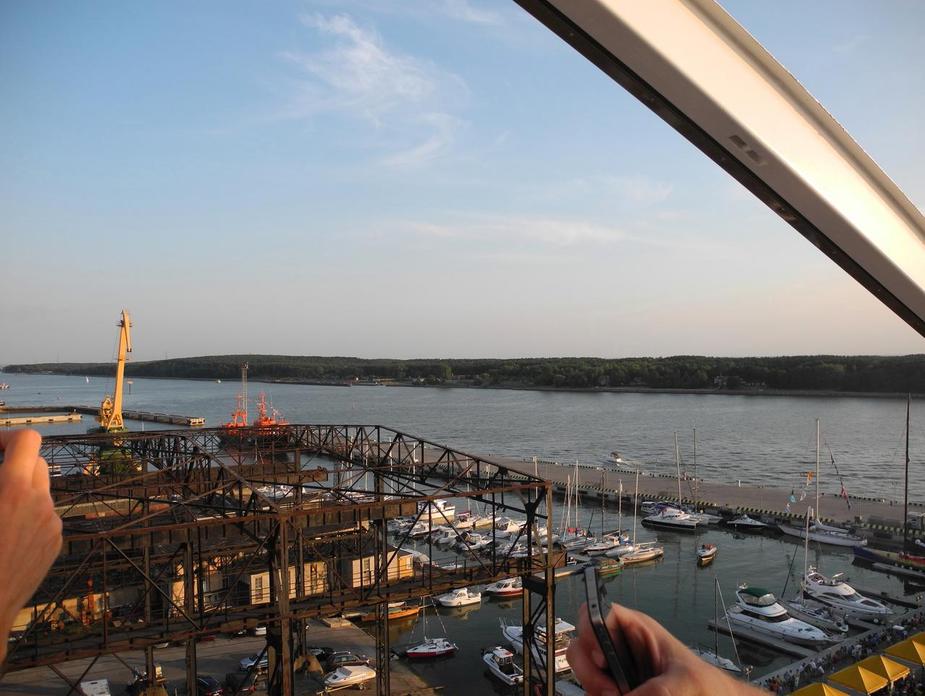
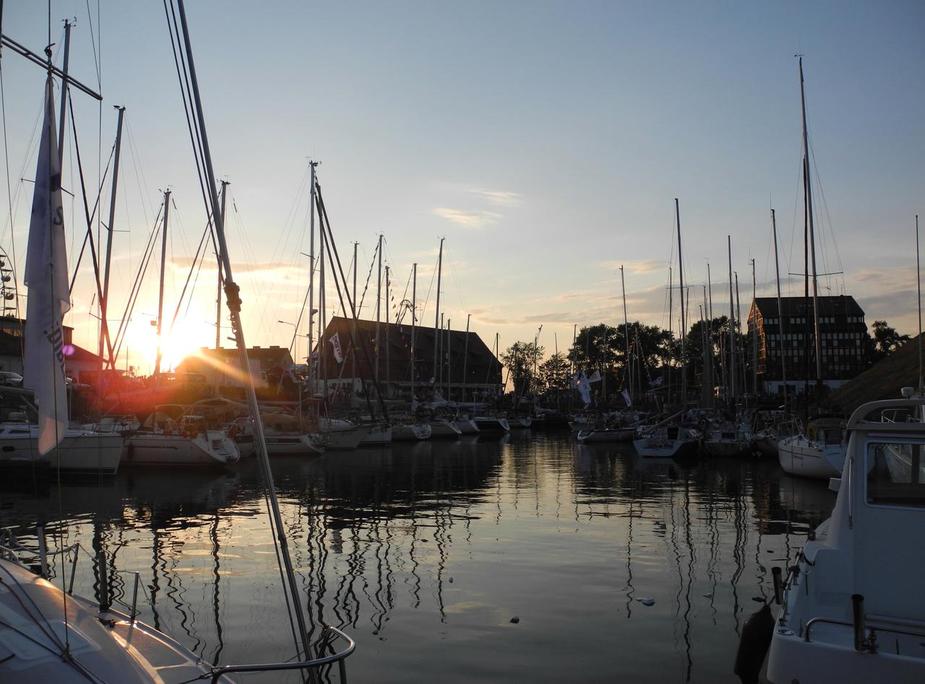
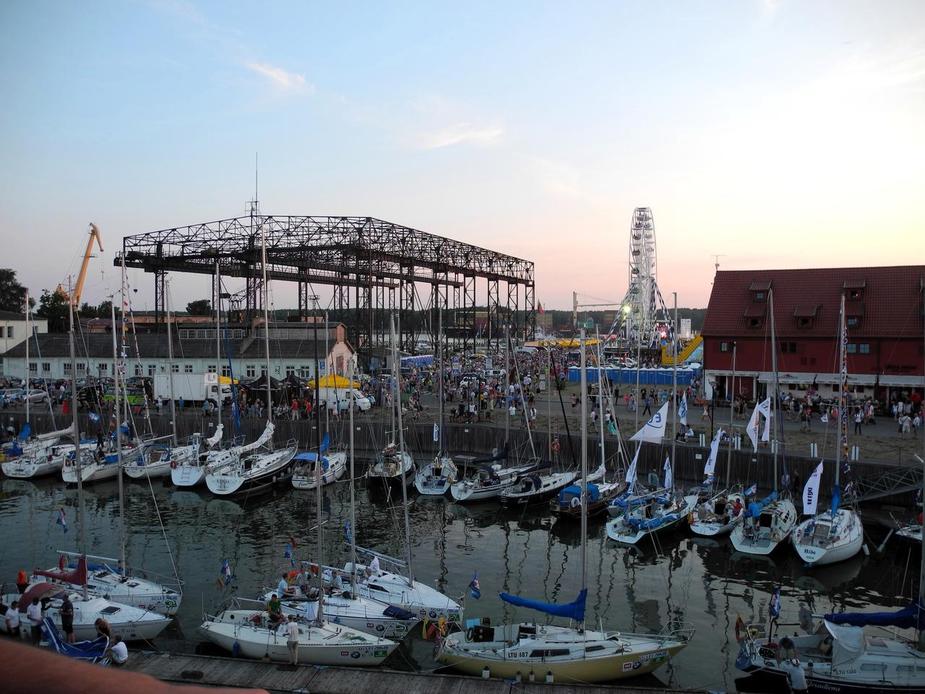
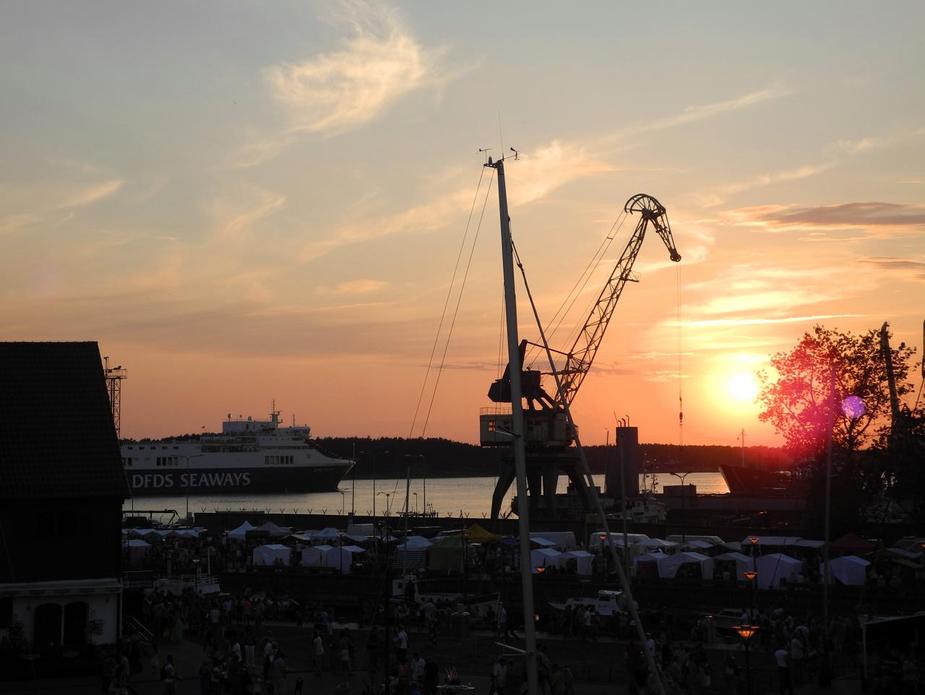
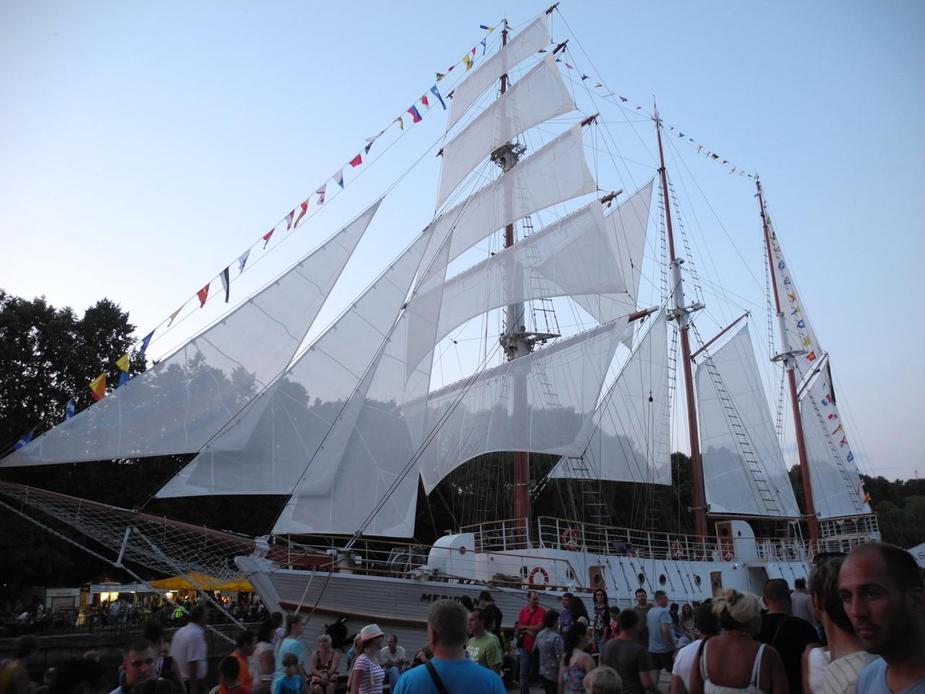
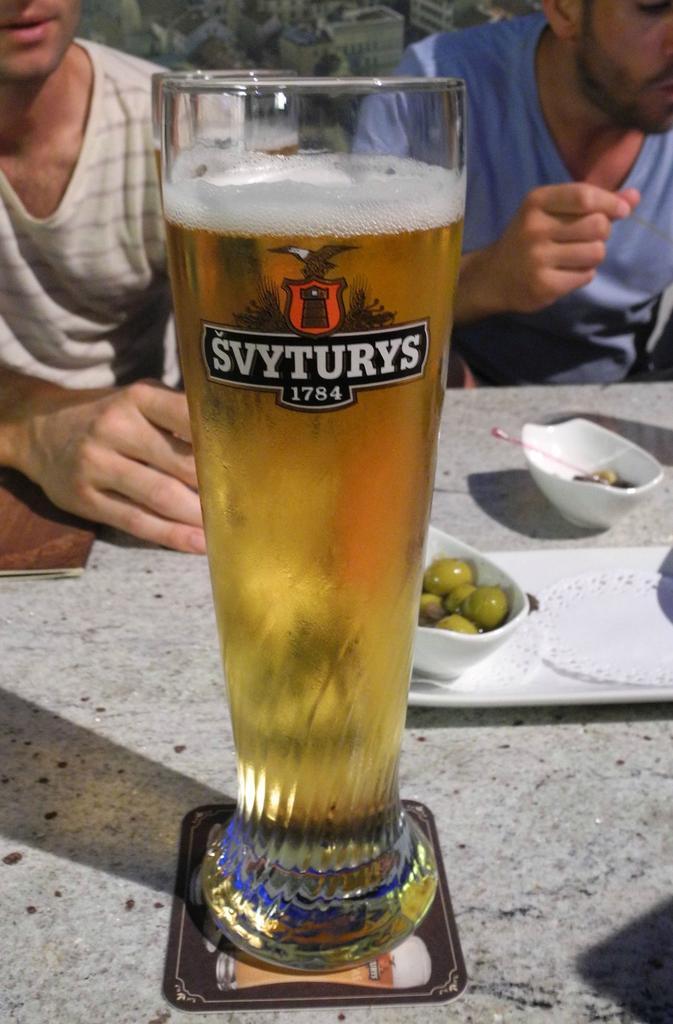
A local speciality: cold beet soup.
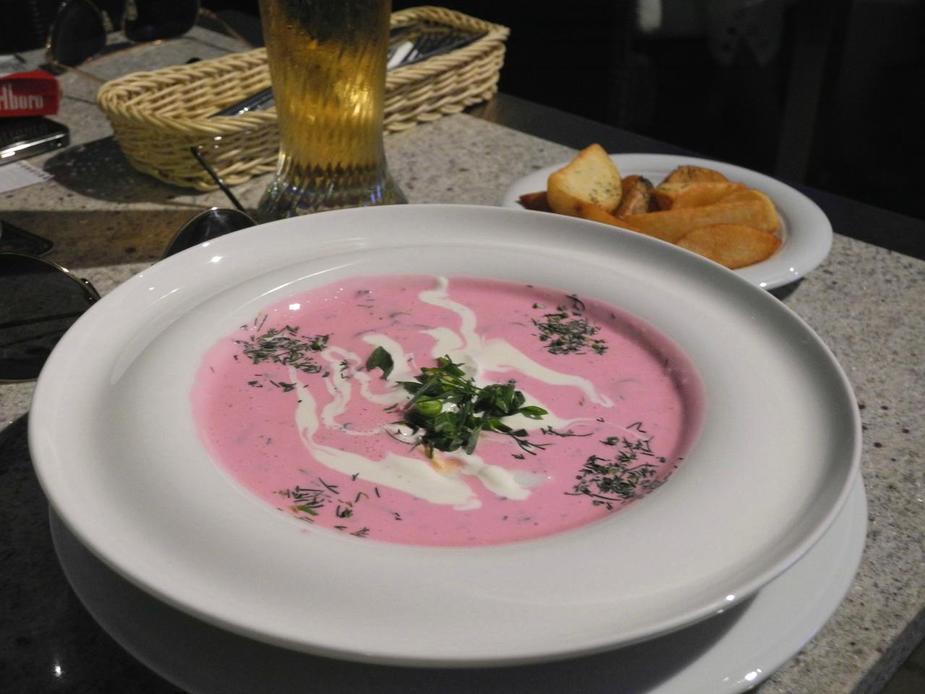
Thorougly having a good time.
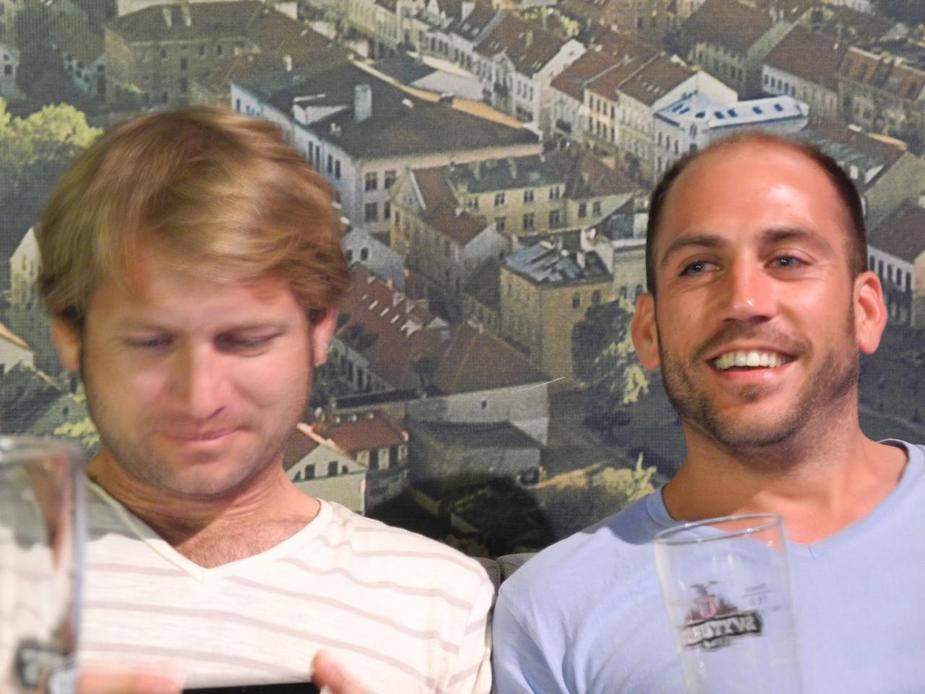
Back to some flying – the next morning we had to return to Germany. The overall weather was still brilliant, so no major worries. The more was I surprised when, at 7 o’clock in the morning, I saw this – directly on our route – on the sat image:
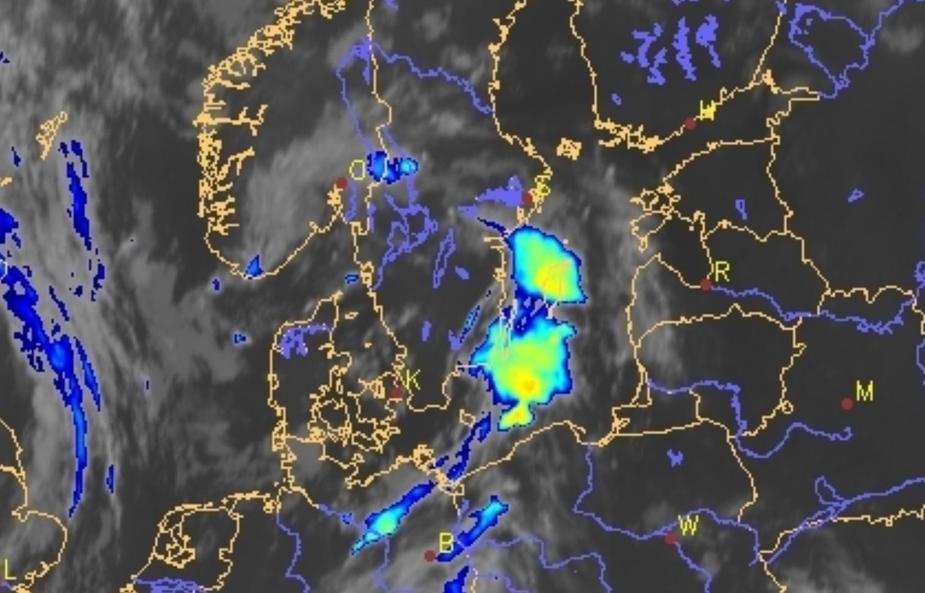
…this on the sferics image:
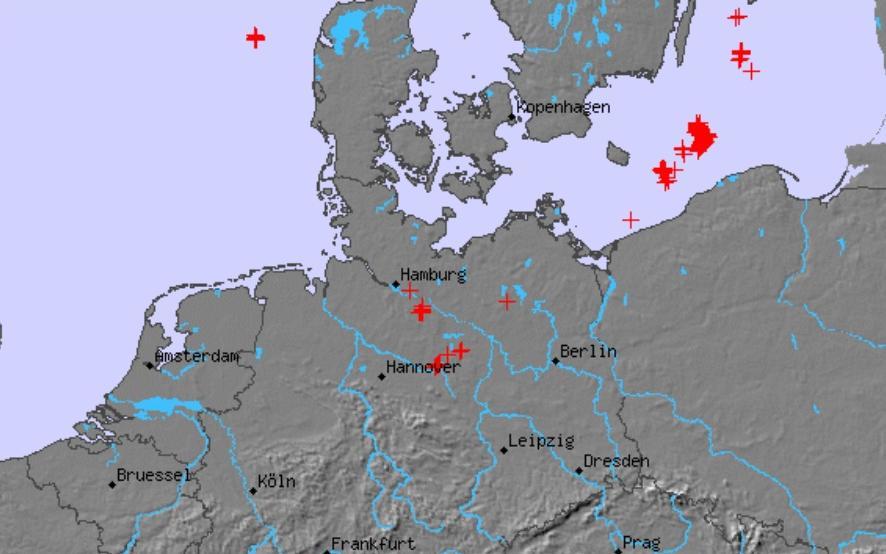
…and this on the radar image:
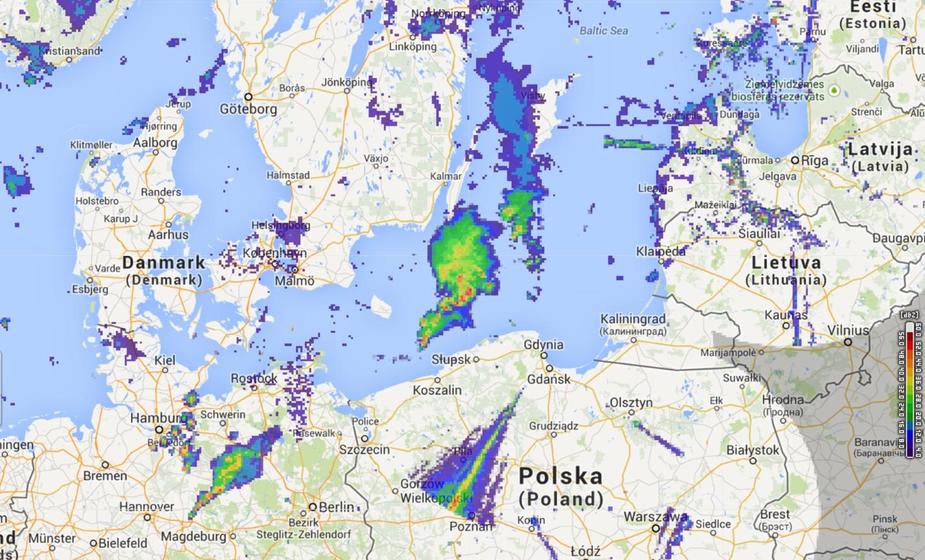
However, upon closer inspection, it became clear that the area of weather was rather small and steadily moving north-northeast, so I reckoned that it wouldn’t be much of a factor two hours later. Also, the GRAMET image didn’t show much cloud at all below FL200.
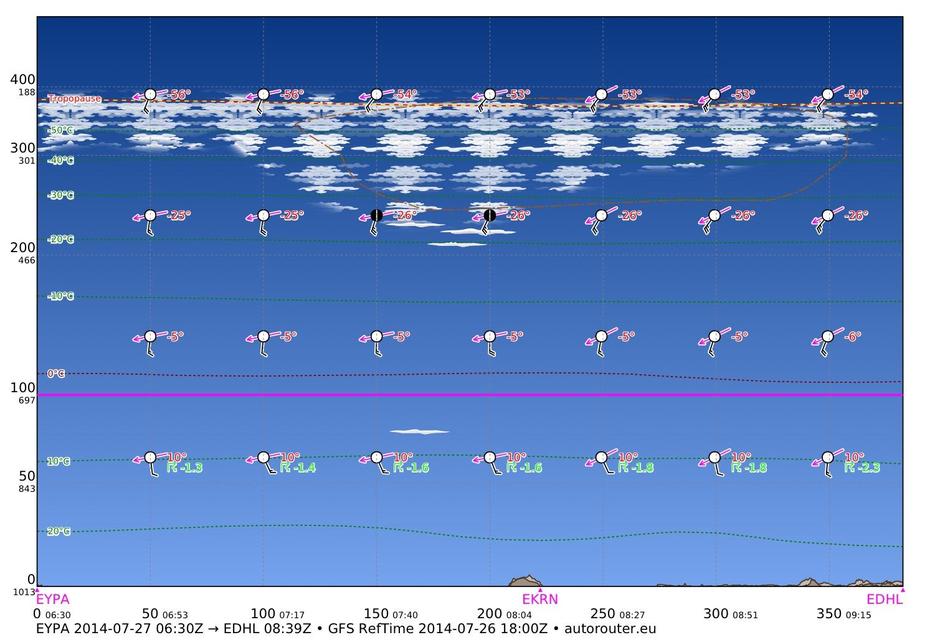
I was however still wary of the weather, since I knew I couldn’t deviate to the south very much – this would have taken me over Kaliningrad.
Meanwhile, we proceeded to the airport, hoping to get some breakfast and found the bistro to be closed on sundays. :-(
Anyway, settling the bill was quick and easy. When we arrived, the invoice was ready and paid by credit card (about 40€).
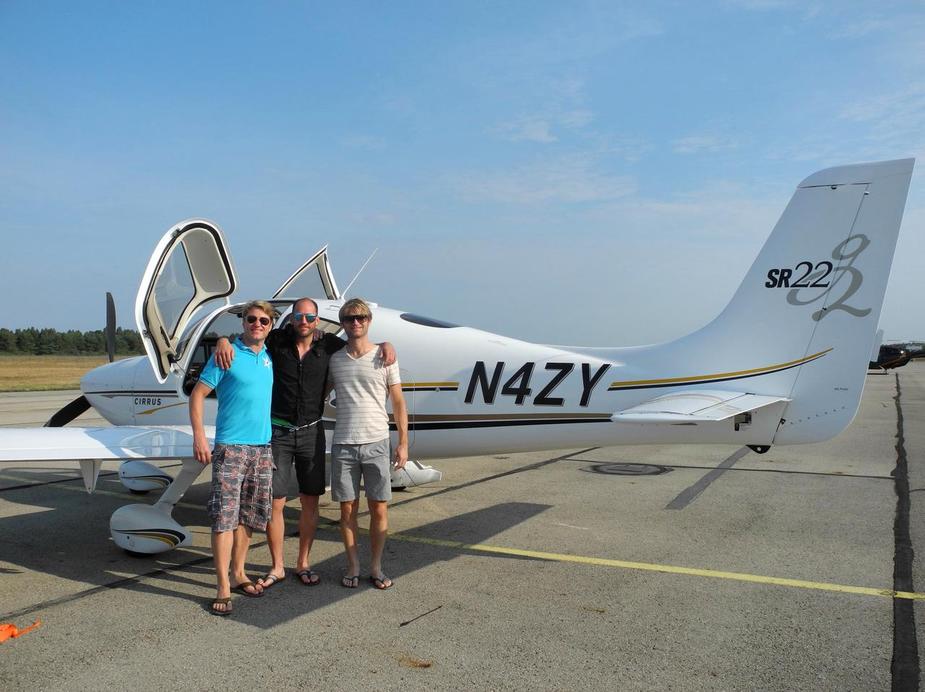
Departure was on runway 19 this time, so we got another view Palanga and its beach.
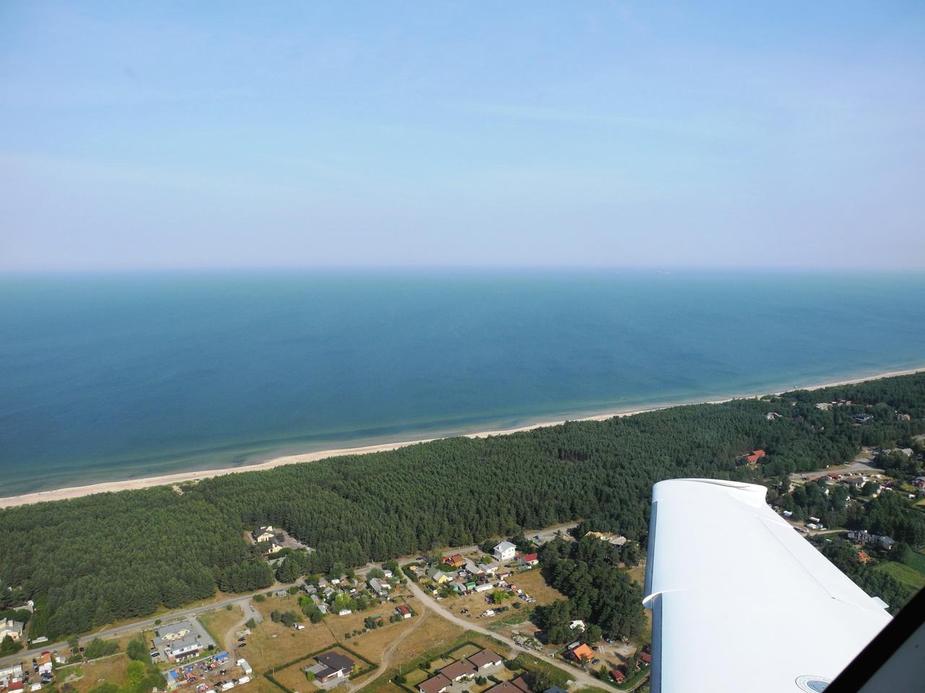
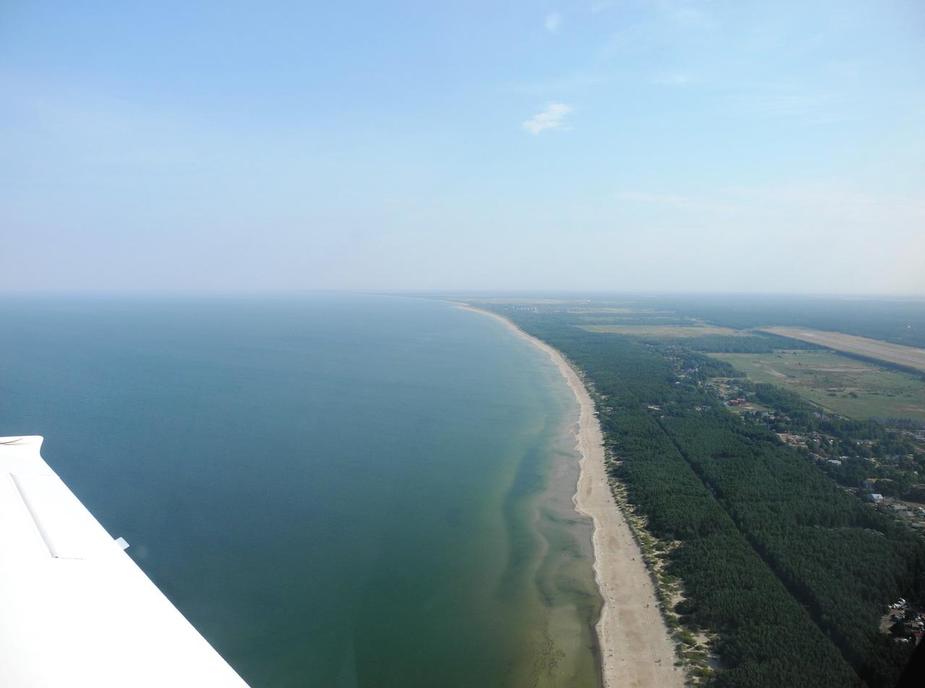
During the climb to FL100, a few high level cumulus clouds appeared.
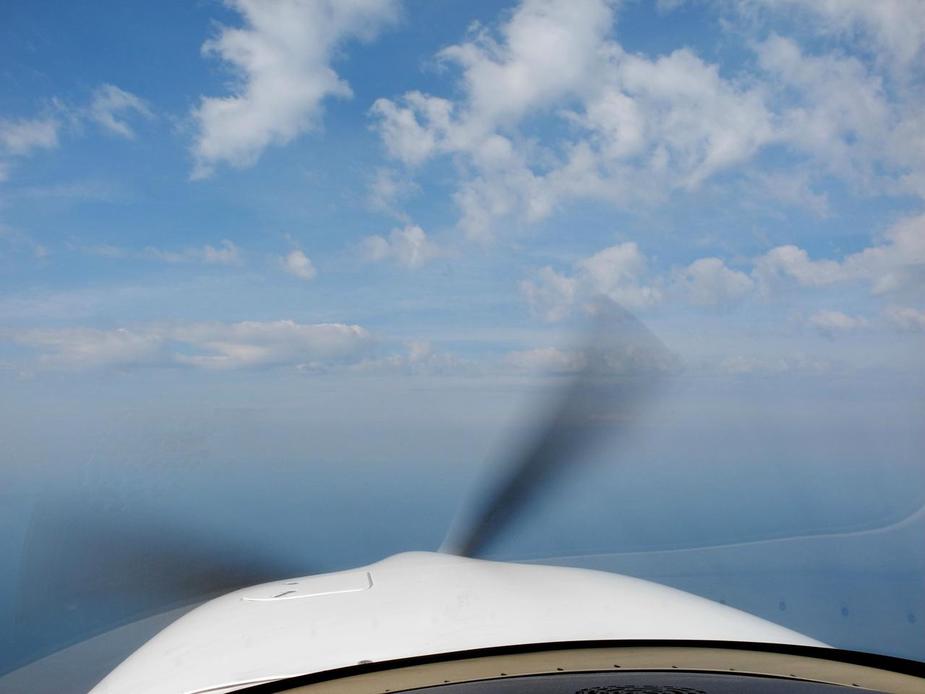
After the handoff to Kaliningrad, we requested a very slight deviation to the south (direct KUNER instead of TIGNU) to stay just a bit further away from any weather, which was approved immediately. He even said something like “you can do whatever you need to do”. 
A few strikes appeared on the MFD.
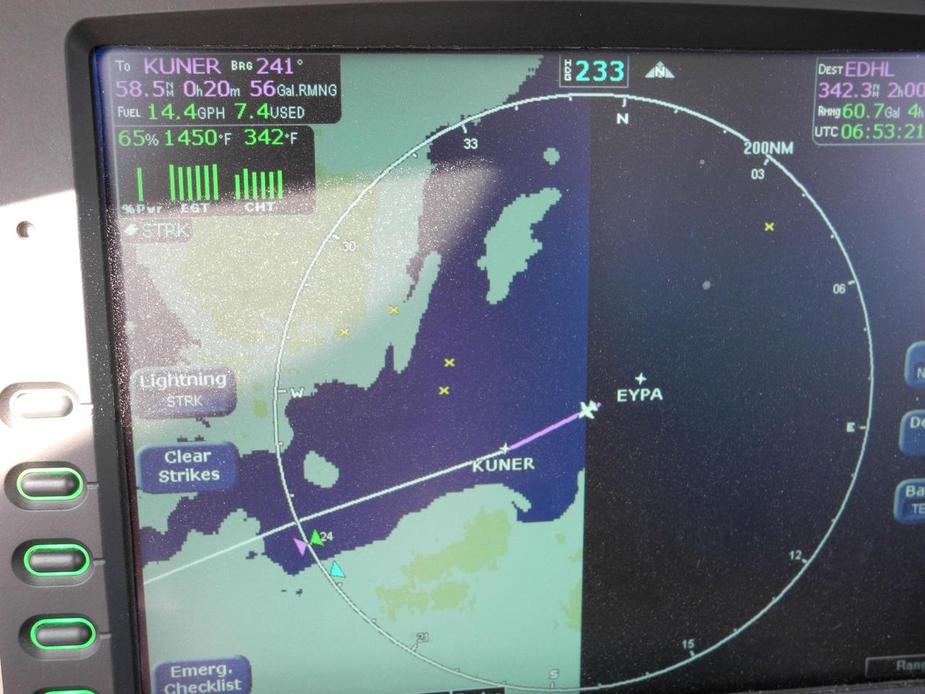
We eventually passed just on top of a layer of clouds and a few towering clouds were visible to the very right, but that was it.
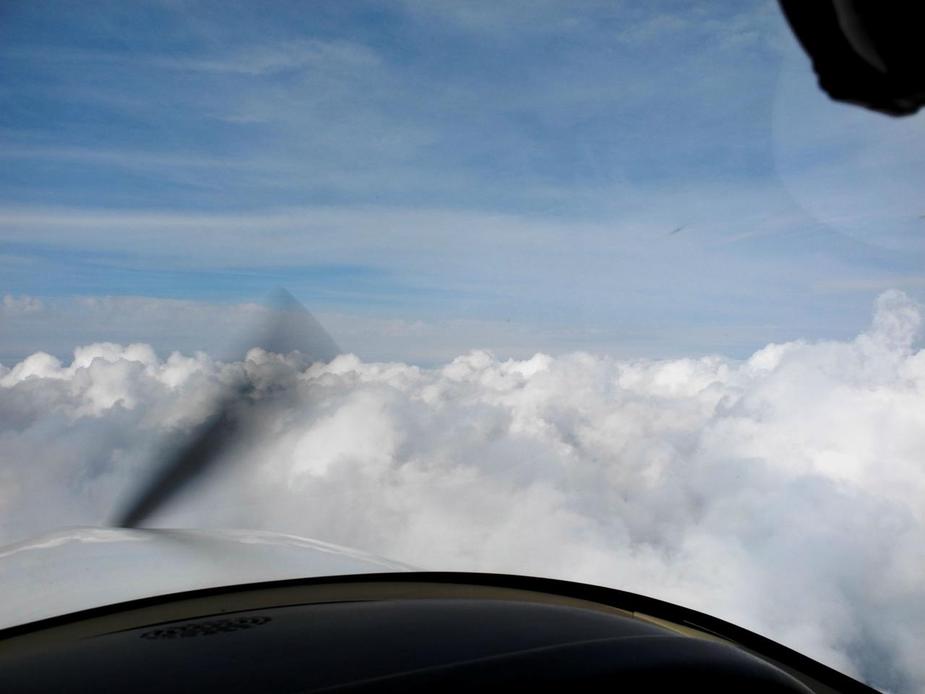
Later on, more strikes on the MFD, but all well to the north of us.
Eventually, we flew the entire flight slightly off our flightplanned route, with no drama at all.
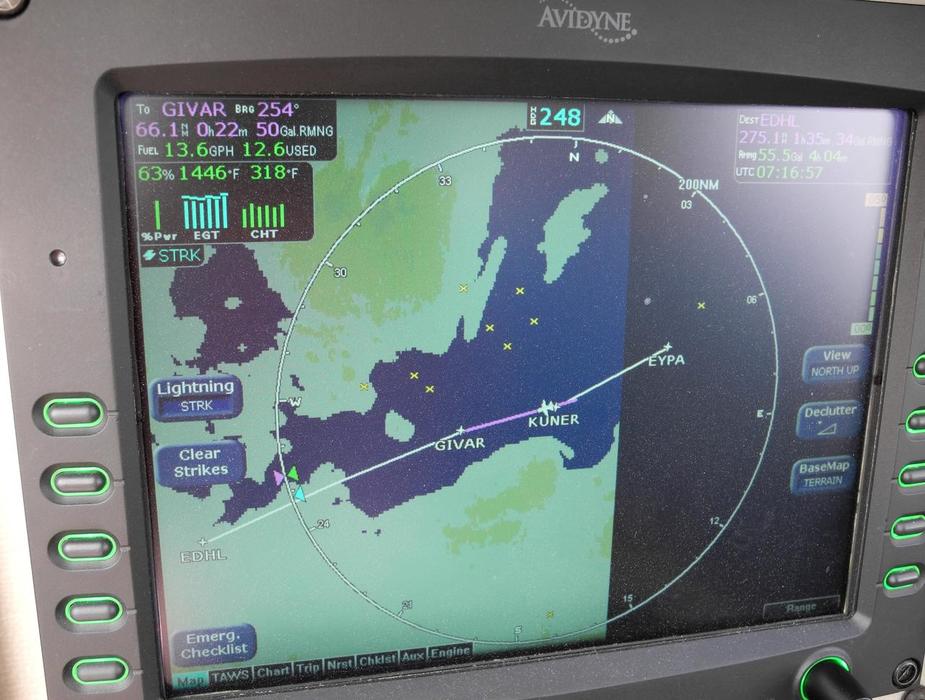
Oil rig in the Baltic Sea.
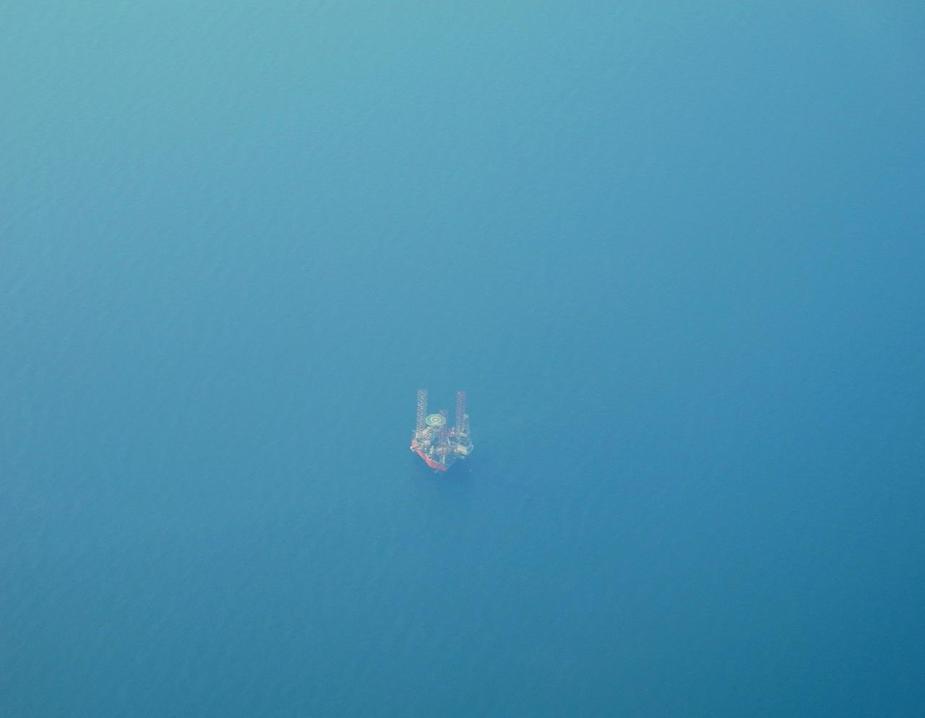
Still only some high cloud above and nothing in our way.
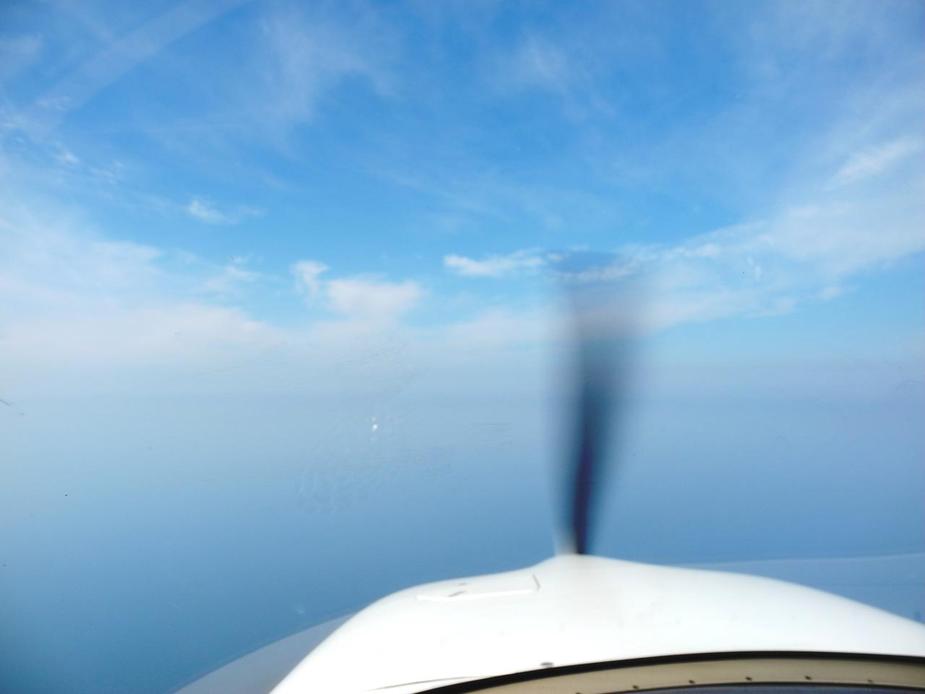
Approaching the south of Rügen, here’s a faint view of the Kreidefelsen Königsstuhl.
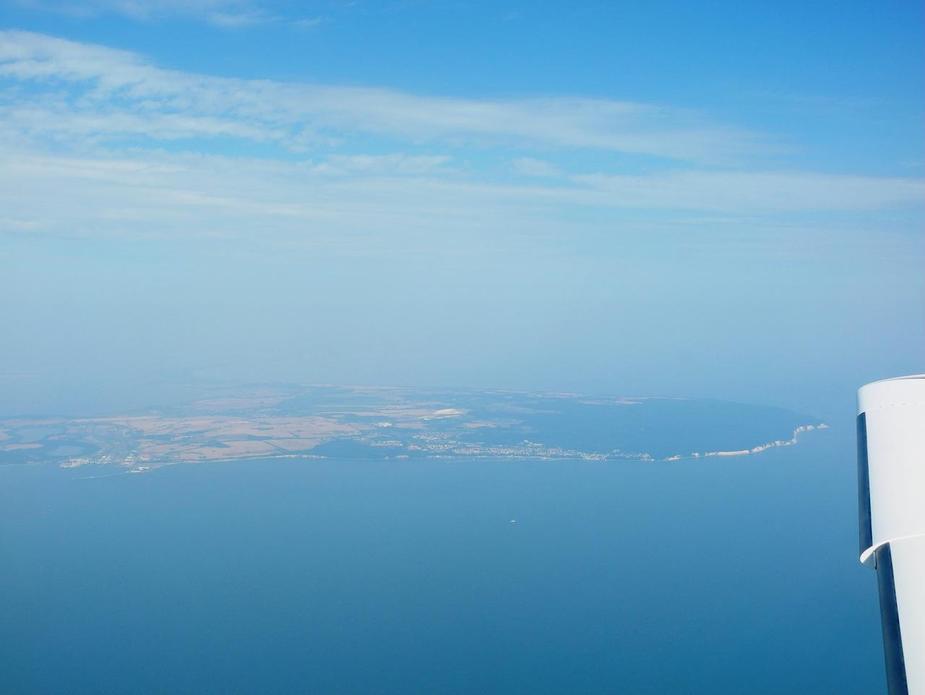
Overhead Warnemünde.
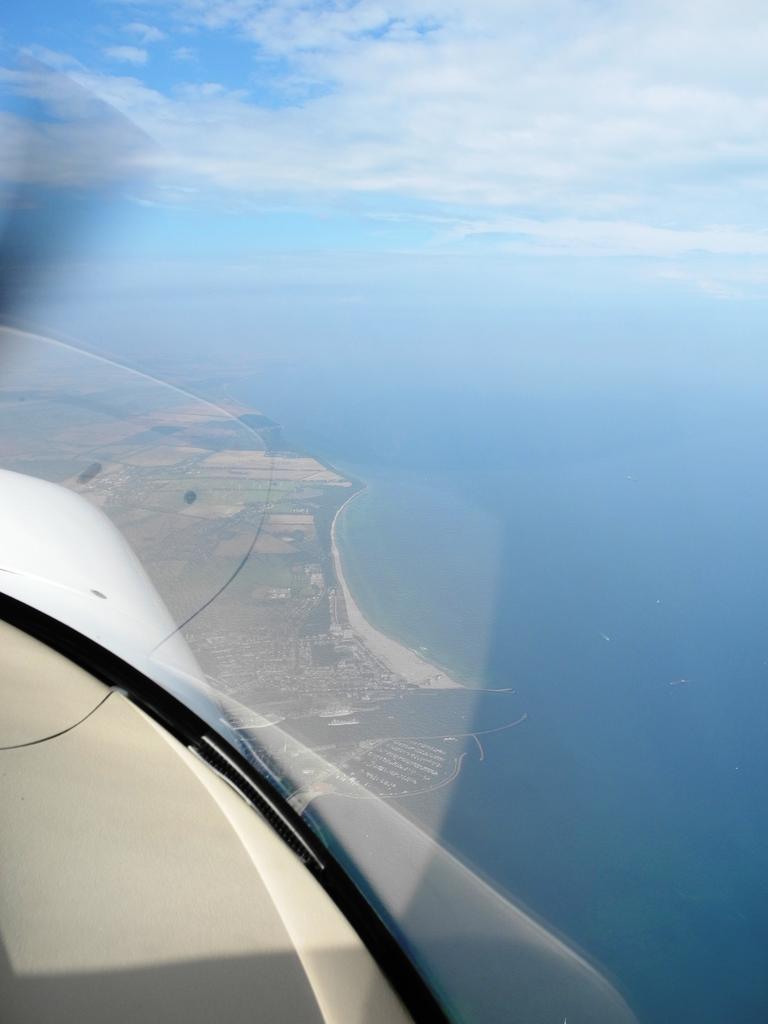
The Rostock harbour.
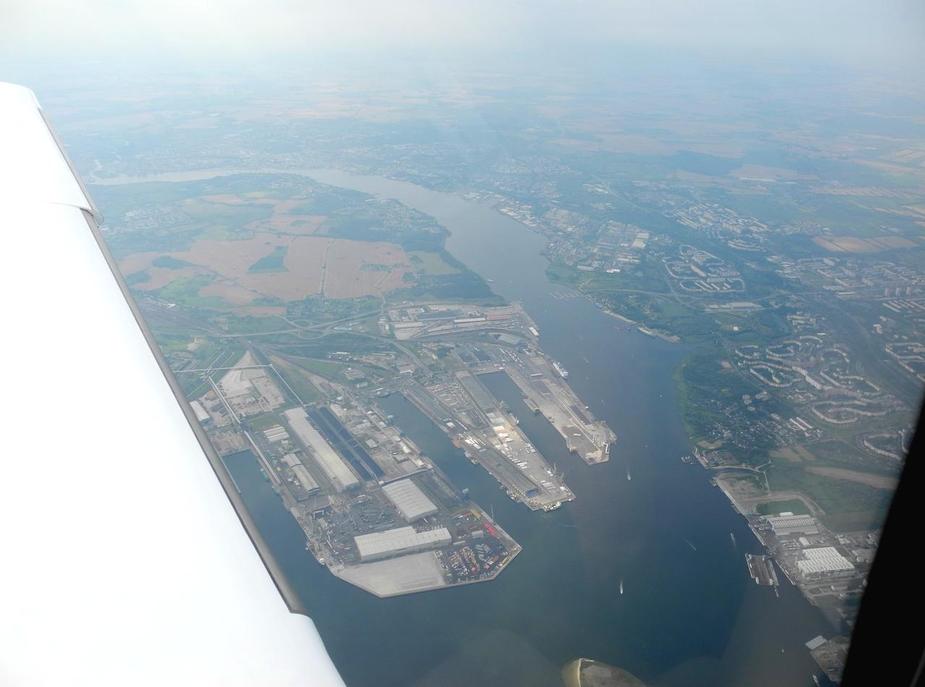
GDR-made: The Rostocker Platte.
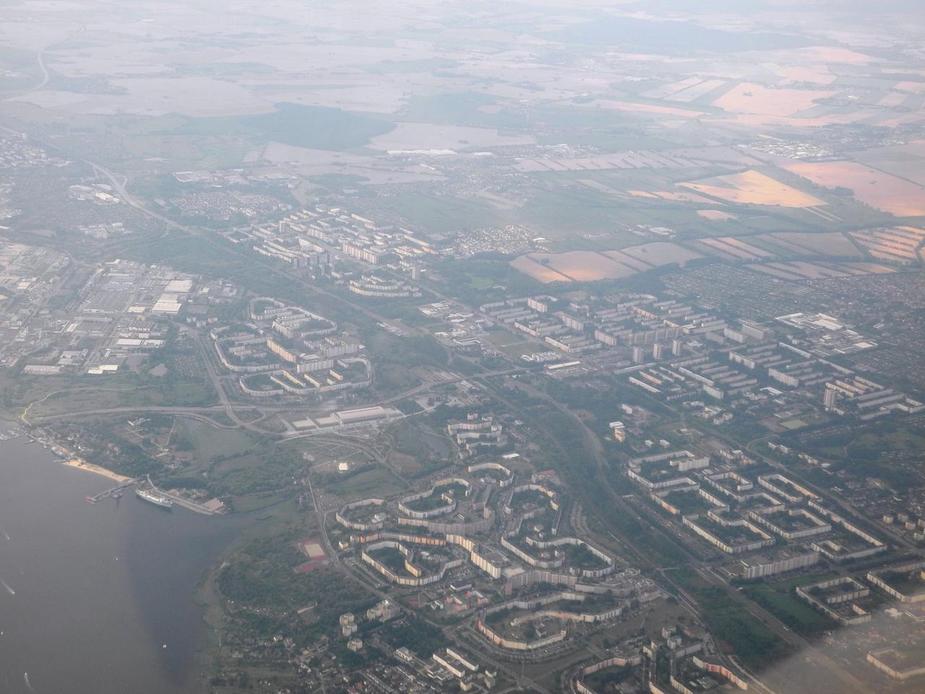
The beachside village of Kühlungsborn.
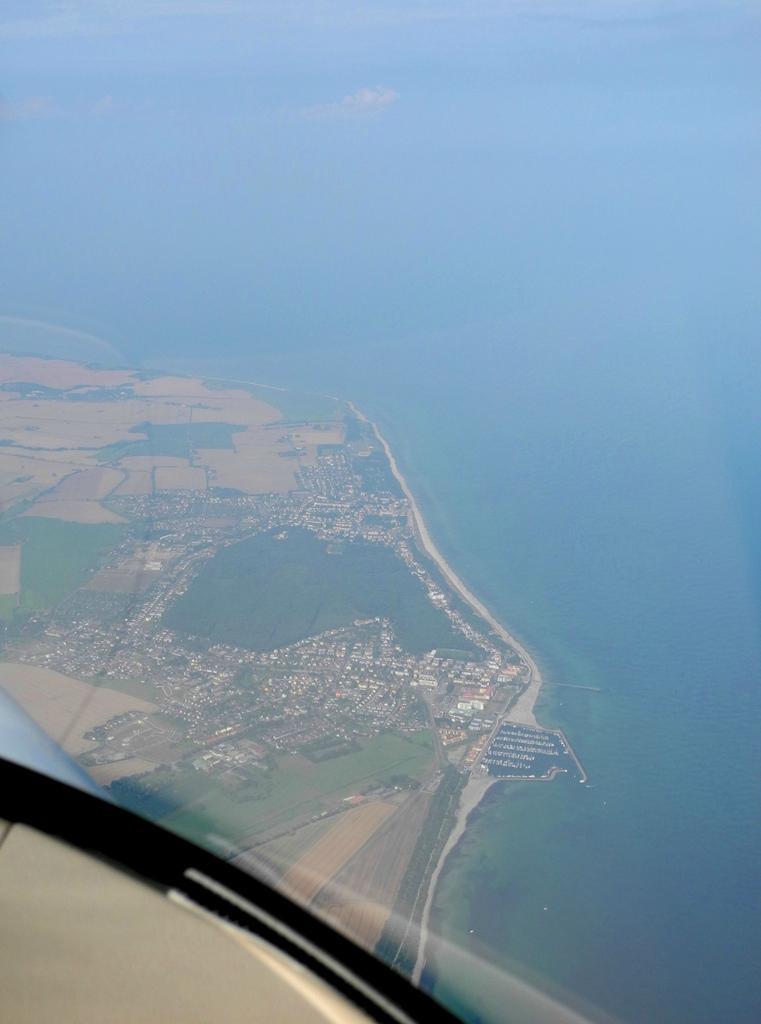
Rerik-Zweedorf airfield (EDCR), unfortunately under huge pressure from the local NIMBYs.
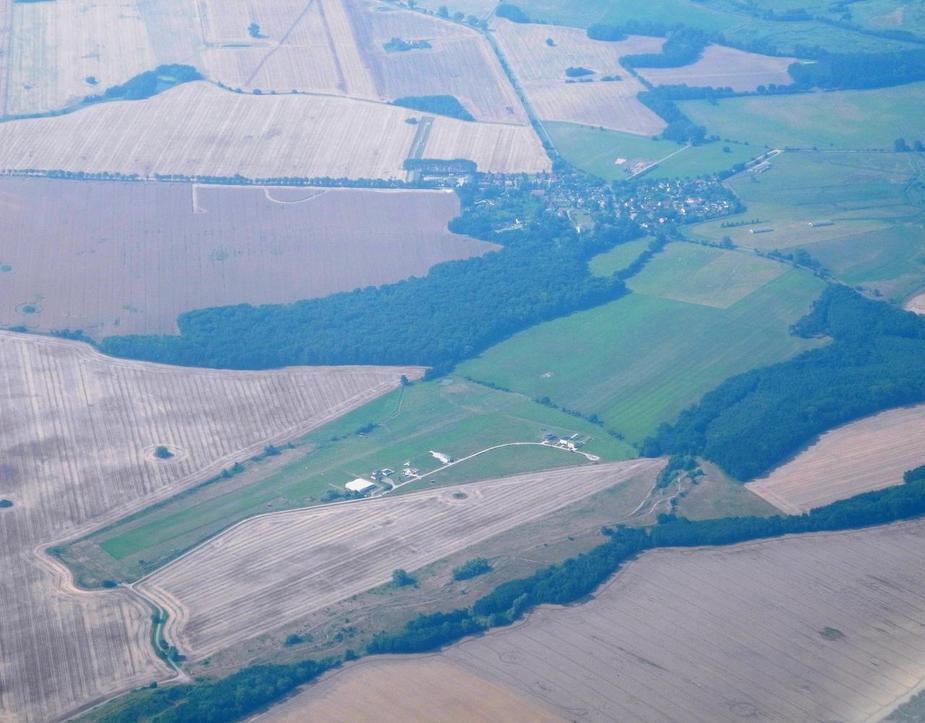
Boltenhagen.
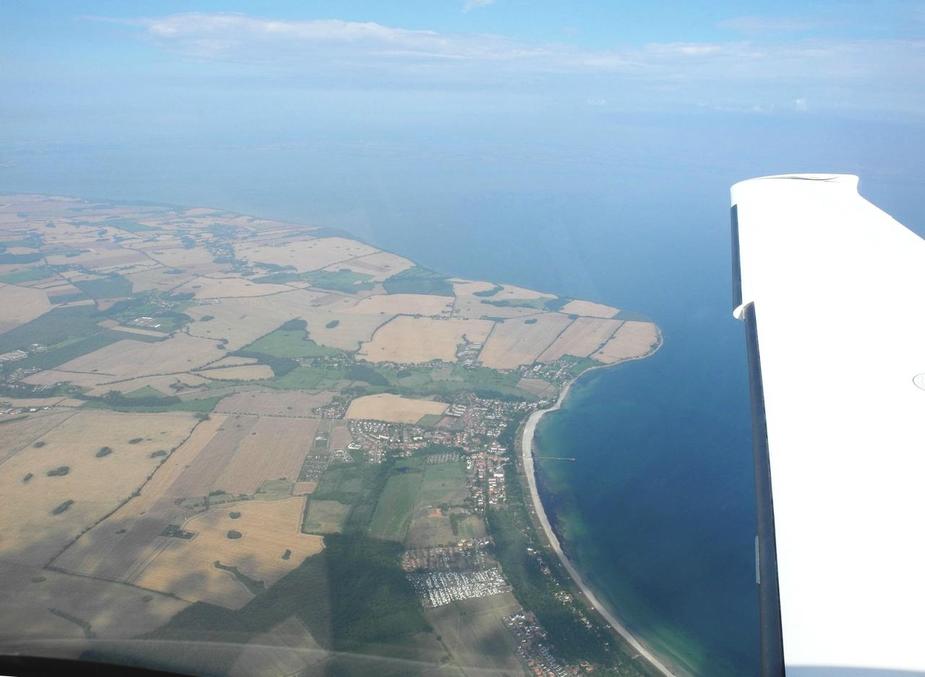
On the ILS approach at EDHL, the Lübecker Bucht.
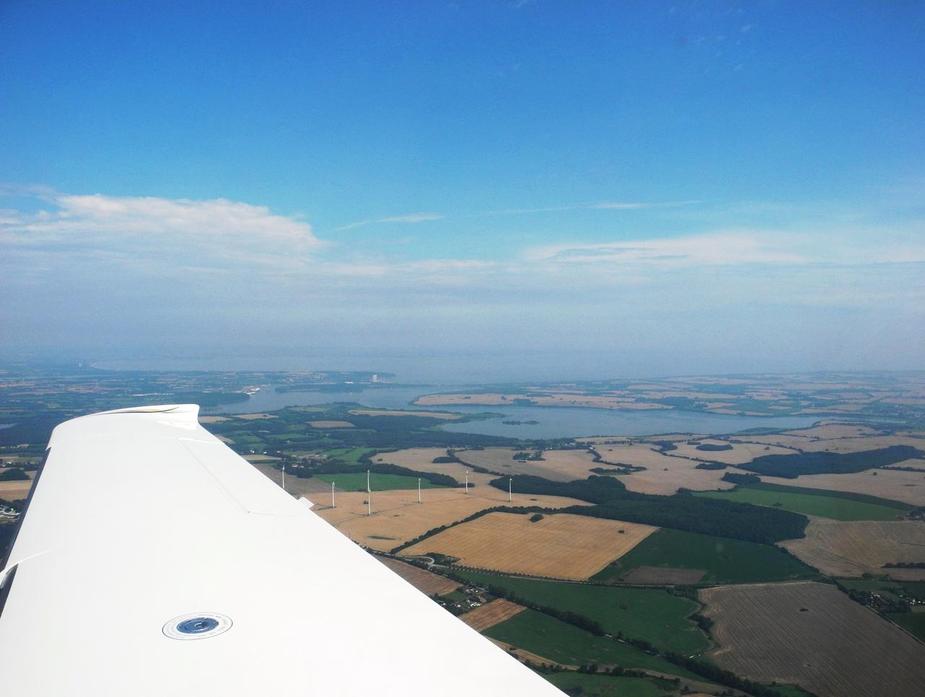
The city of Lübeck.
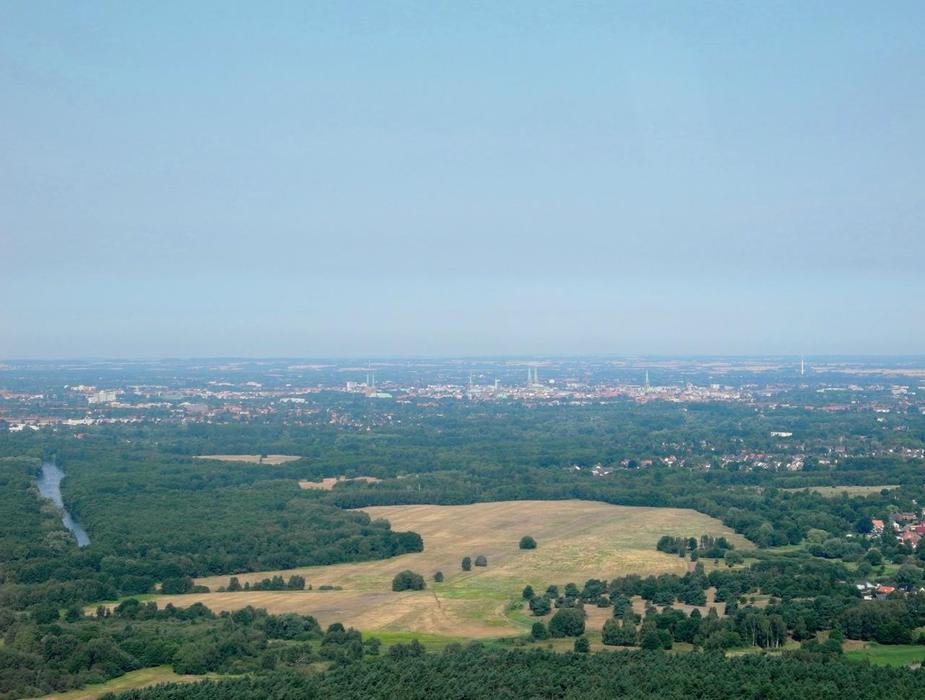
Final runway 25. Due to our slight detour to the south, the flight took two hours and twenty minutes.
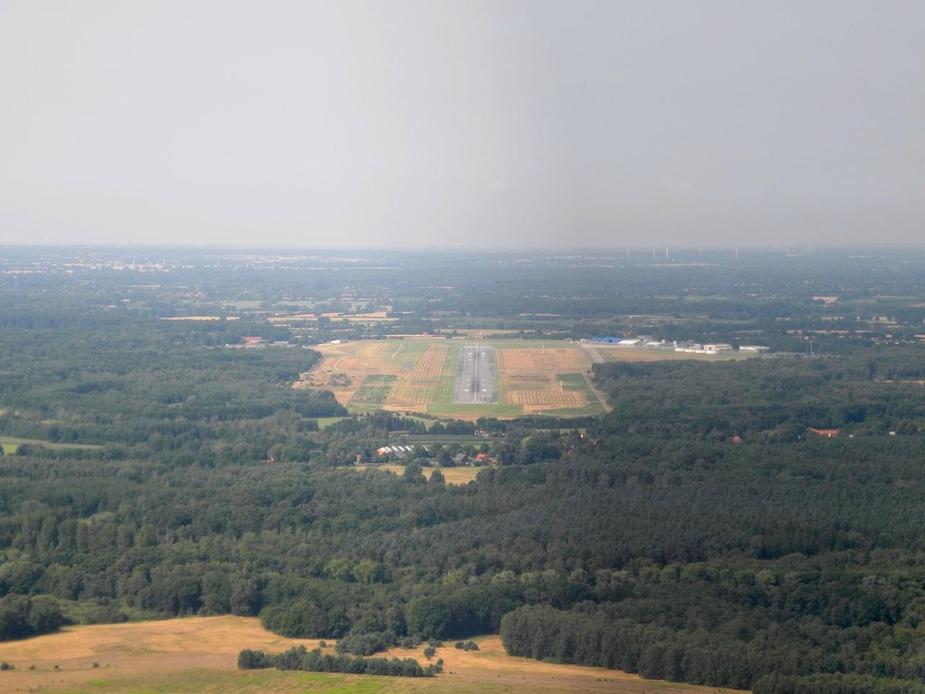
Taxying back in, a view of the “terminal buildings” at Lübeck. As of the 1st of August, all Ryanair flights have been cancelled. Let’s hope things will improve again.
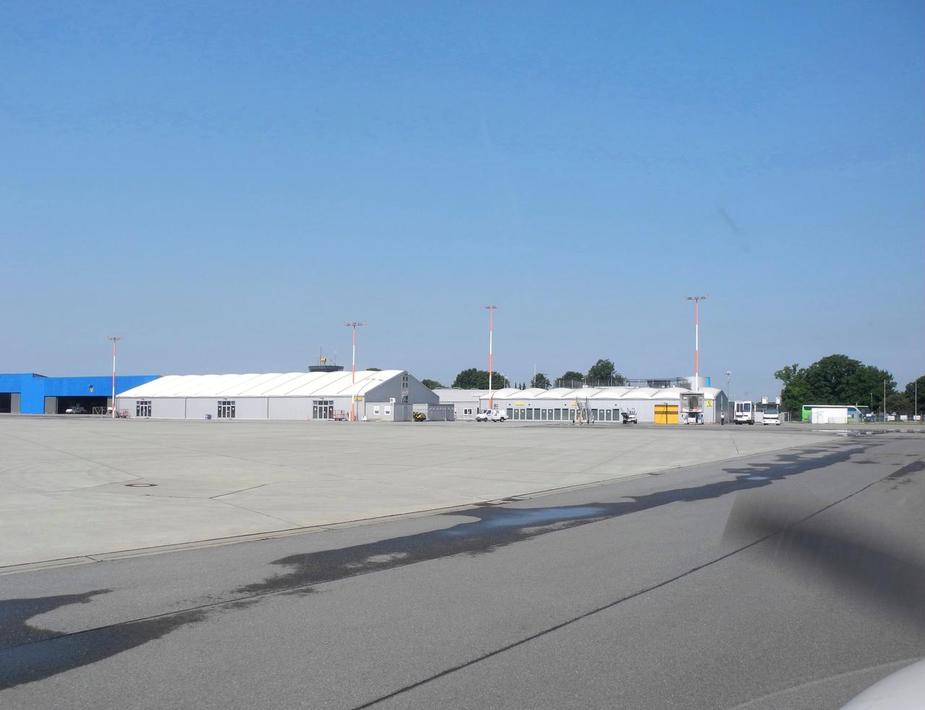
An excellent weekend trip. Anybody plan on doing Lithuania?
Most definitrly. If only to get handled ^^
I have been to Lithuania several times, but always driving. Once on a ferry boat from Rügen to Klaipeda, carrying a whopping 16 passengers but a good deal of lorries, and still operating very much in the DDR tradition.
It’s been a long time now, though, since I was there, I wonder what has changed since. I remember visiting Palanga airport, even more desolate then (1995 or so?) but also Klaipeda airfield with a collection of vivid An-2 biplanes that were then frequently on hire to Swedish paraclubs. Such a pity I hadn’t heard of Kaunas old airfield and its aviation museum, that place remains on my wishlist.
Still, I am more curious about neighbouring Latvia, I have a feeling that country absorbed less foreign influence. But all are sadly far away if one flies at 80 knots…
Thanks very much for sharing, Philipp!
Thanks for sharing. In Russian airspace, did you get altitudes in meters rather than feet?
Very interesting! Thanks for sharing!
Thanks for sharing. In Russian airspace, did you get altitudes in meters rather than feet?
Russia switched to the imperial system a few years back. Quite sad actually 
Before I read this I didn’t even know that Palanga existed, but now I feel like going there…
Before I read this I didn’t even know that Palanga existed
At the time of my first visit, there was quite a bit of pilgrimage of Germans, visiting those faraway shores in the hopes of finding memories of their forebears. What is now Kaliningrad was once Königsberg, and Klaipeda was Memel, and still (or again?) shows the statue of Ännchen von Tharau
(coulnd’t resist adding the link: en.wikipedia.org/wiki/Heinrich_Albert_%28composer%29#mediaviewer/File:Anke_van_Tharaw.png)
Russia switched to the imperial system a few years back. Quite sad actually
Sad indeed! I always kept the metre-scaled altimeter and vario in my craft in the hopes of using them in their native environment one day (and converting metres to feet and vice versa in my old head all the while) – really no more use, now, apparently.
Before I read this I didn’t even know that Palanga existed…
After 20+ years of doing weekly Jeppesen paper revisions I know the name of every (IFR) airfield within a radius of 2000km  But with the switch to EFBs, this familiarity will soon be lost. To Lithuania I have never been myself, unfortunately, it looks like a place worth visiting.
But with the switch to EFBs, this familiarity will soon be lost. To Lithuania I have never been myself, unfortunately, it looks like a place worth visiting.
Russia switched to the imperial system a few years back. Quite sad actually
Strange… when I open the approach plates from the AIP, these are all in meters.
Link
But ATC will typically give you altitude in feet if you are not RA registered.
Great report! Thanks!
I know some pilots here in the Stockholm area who regularly fly to Palanga and highly recommend it. Your report really
motivated me more to go there, still a little bit sceptic to cross that much water ;) I usually fly to the Swedish Island Gotland Northwest of Palanga… “relatively” good gliding distance in case of an engine failure. This might be a greater challenge in a 172SP ;)